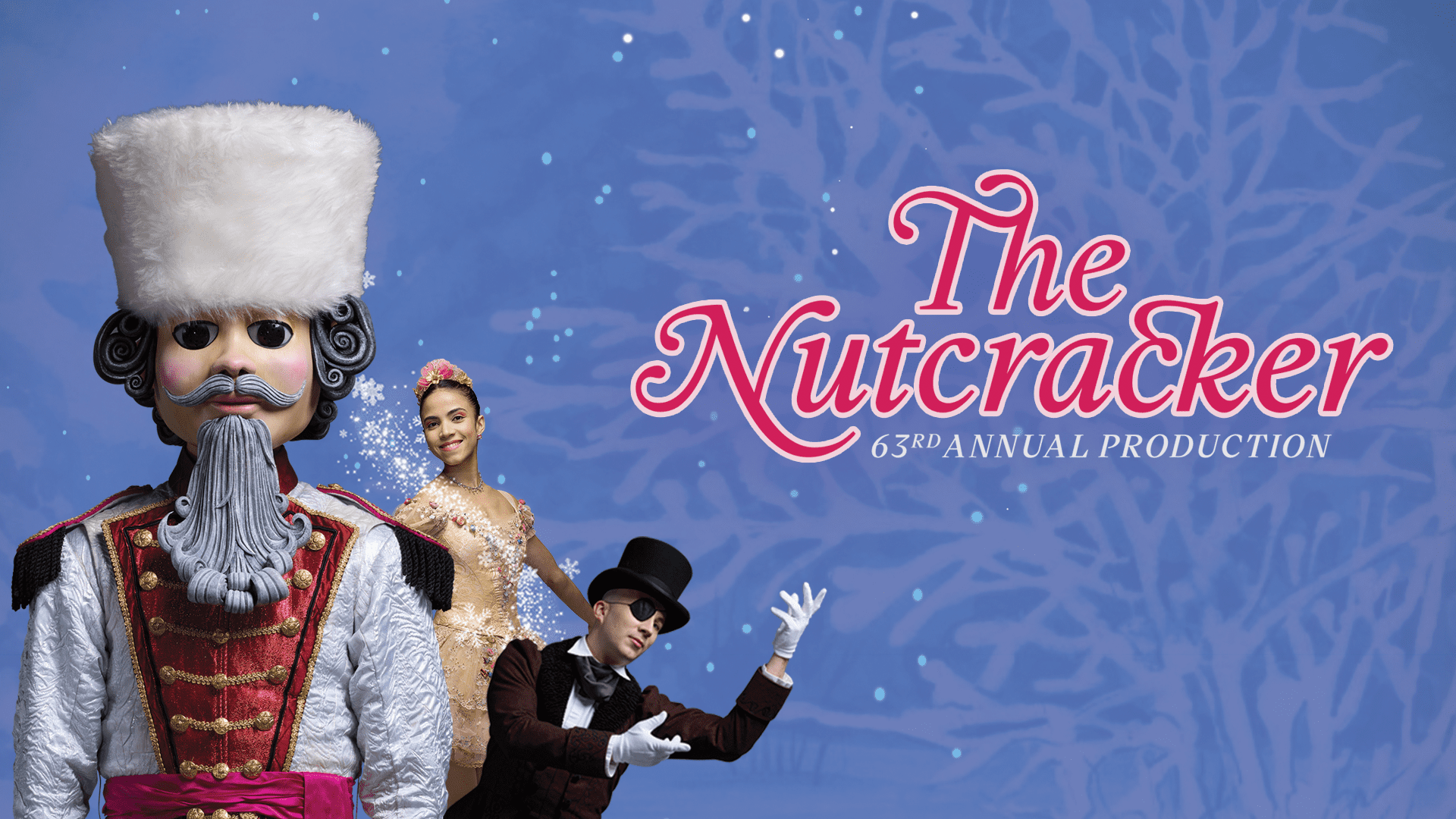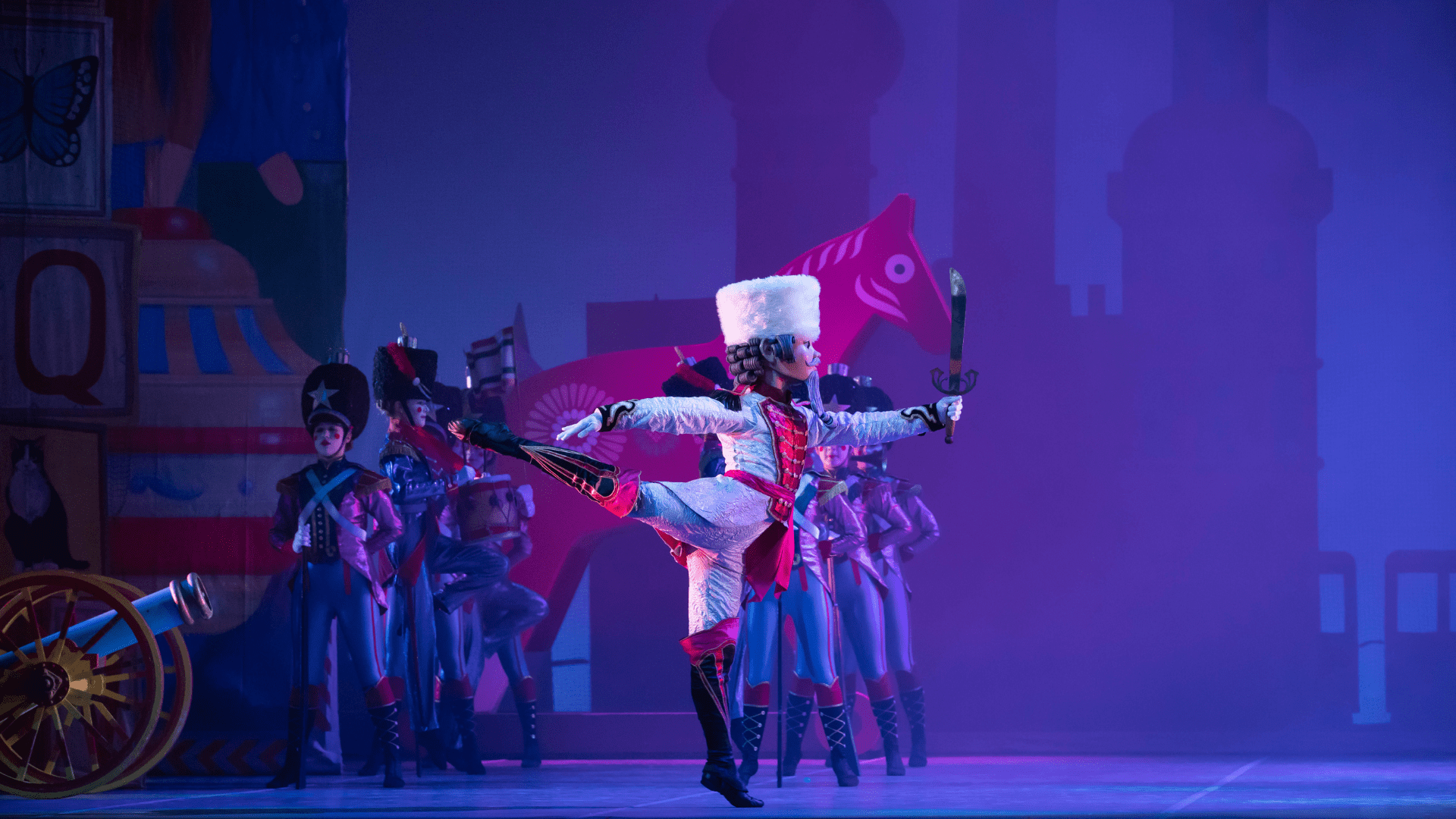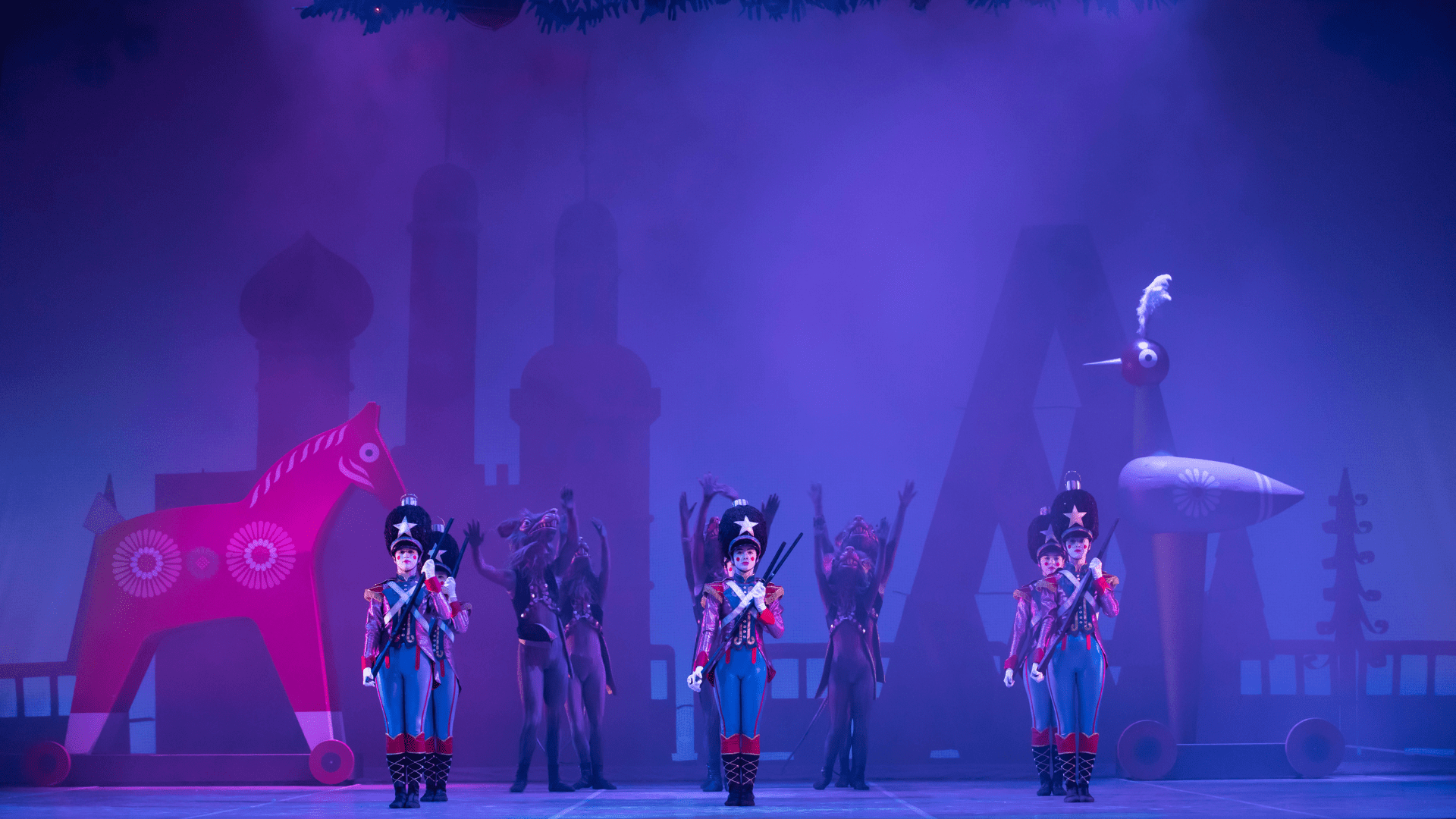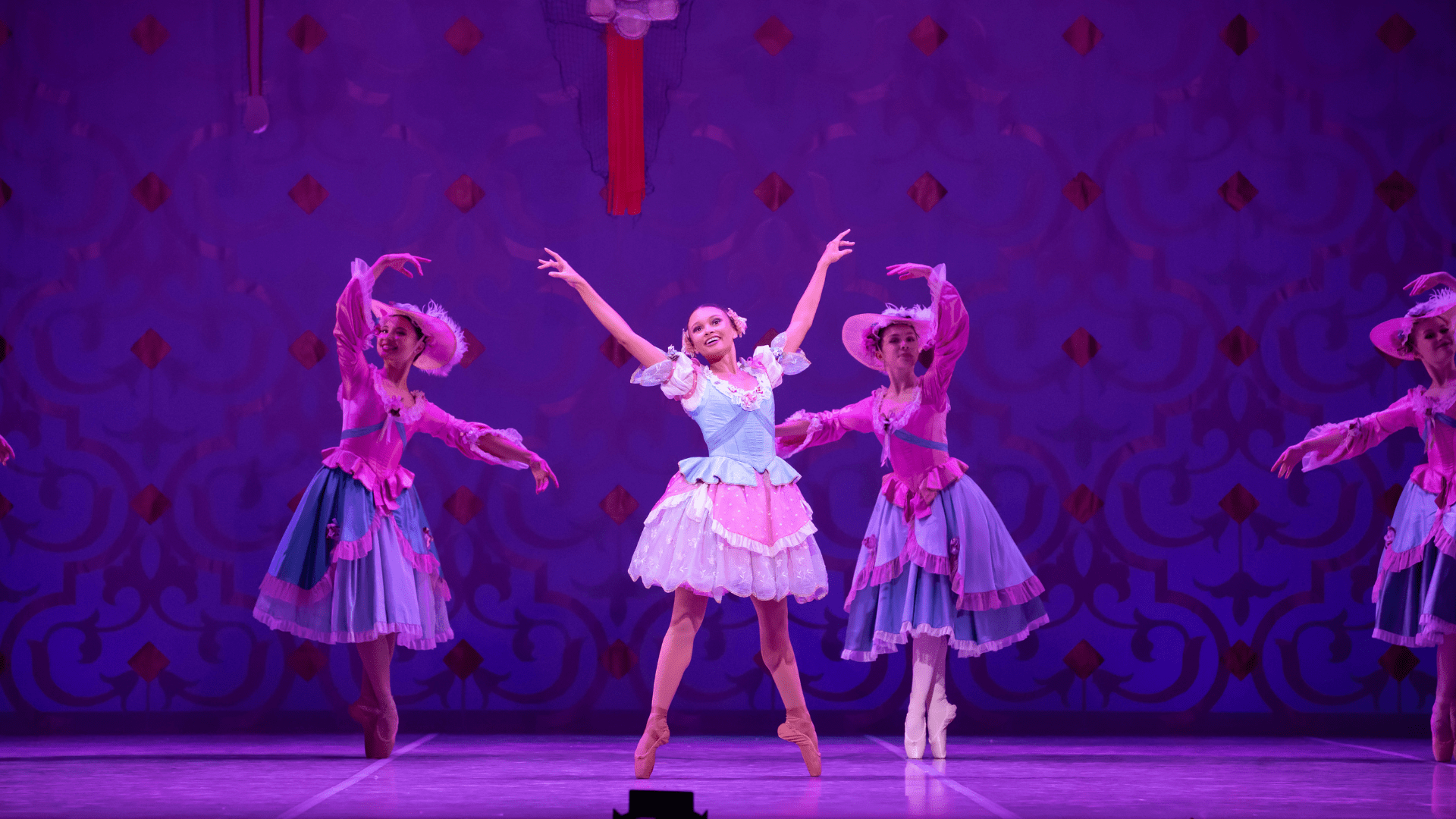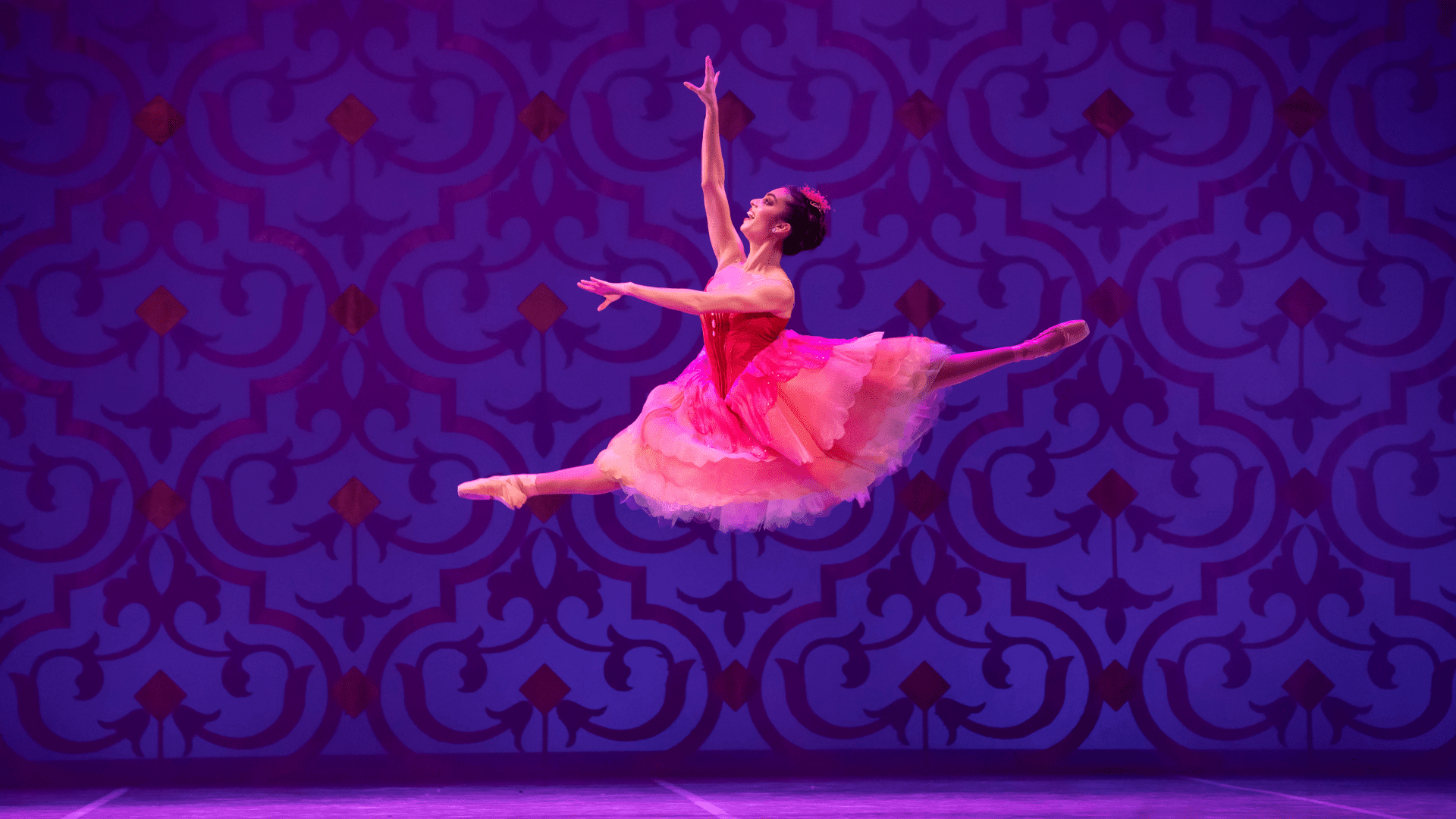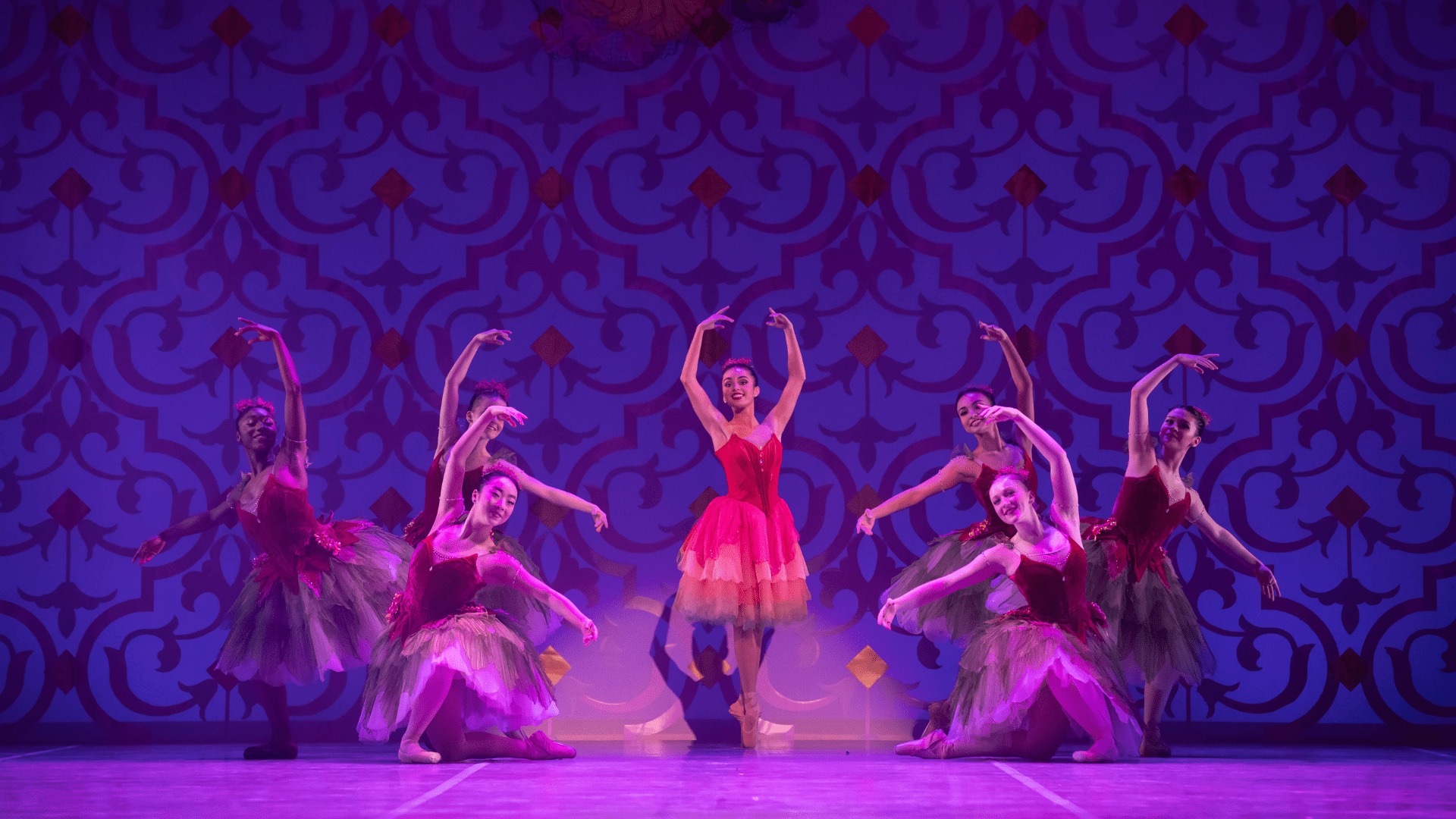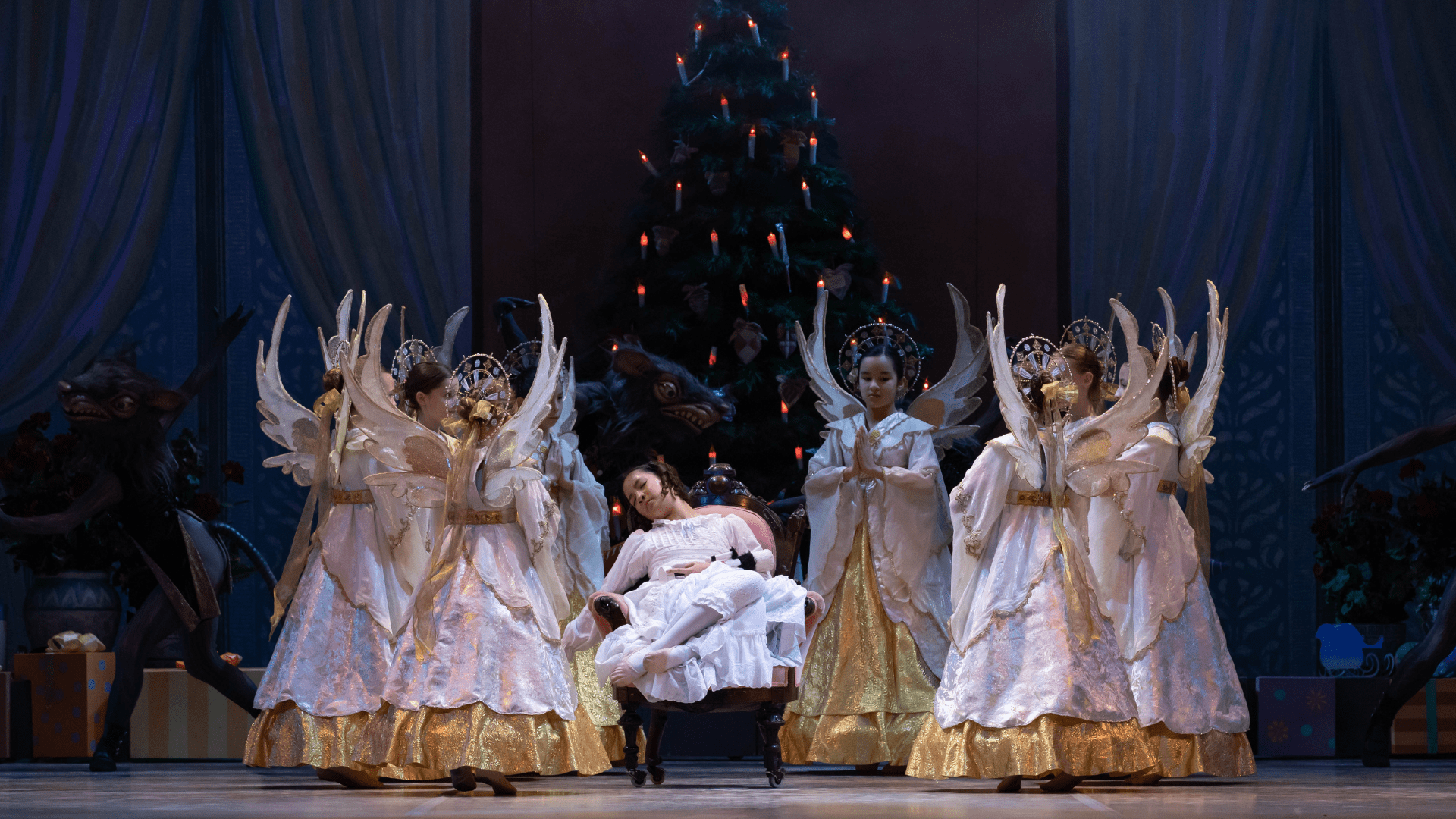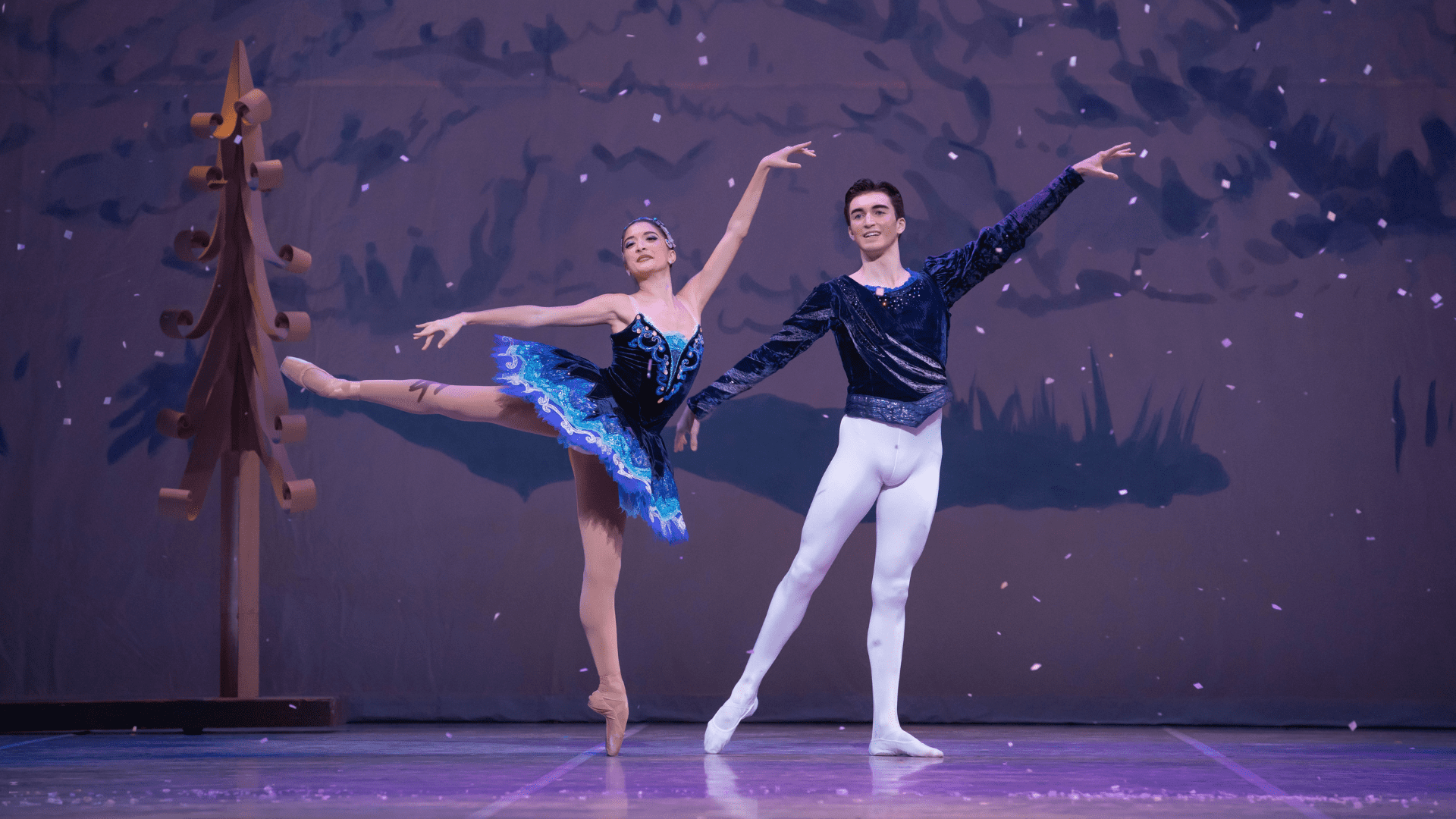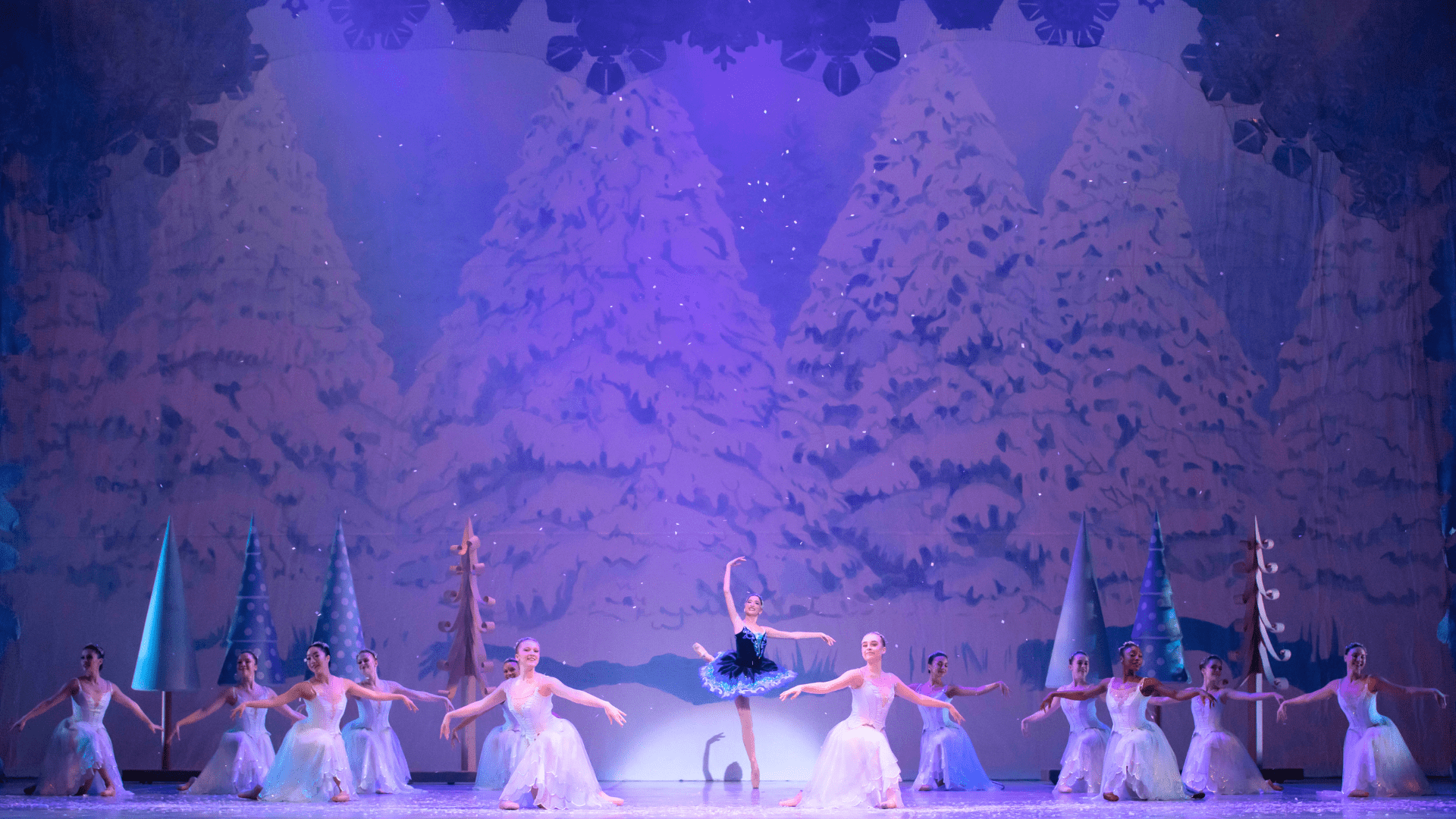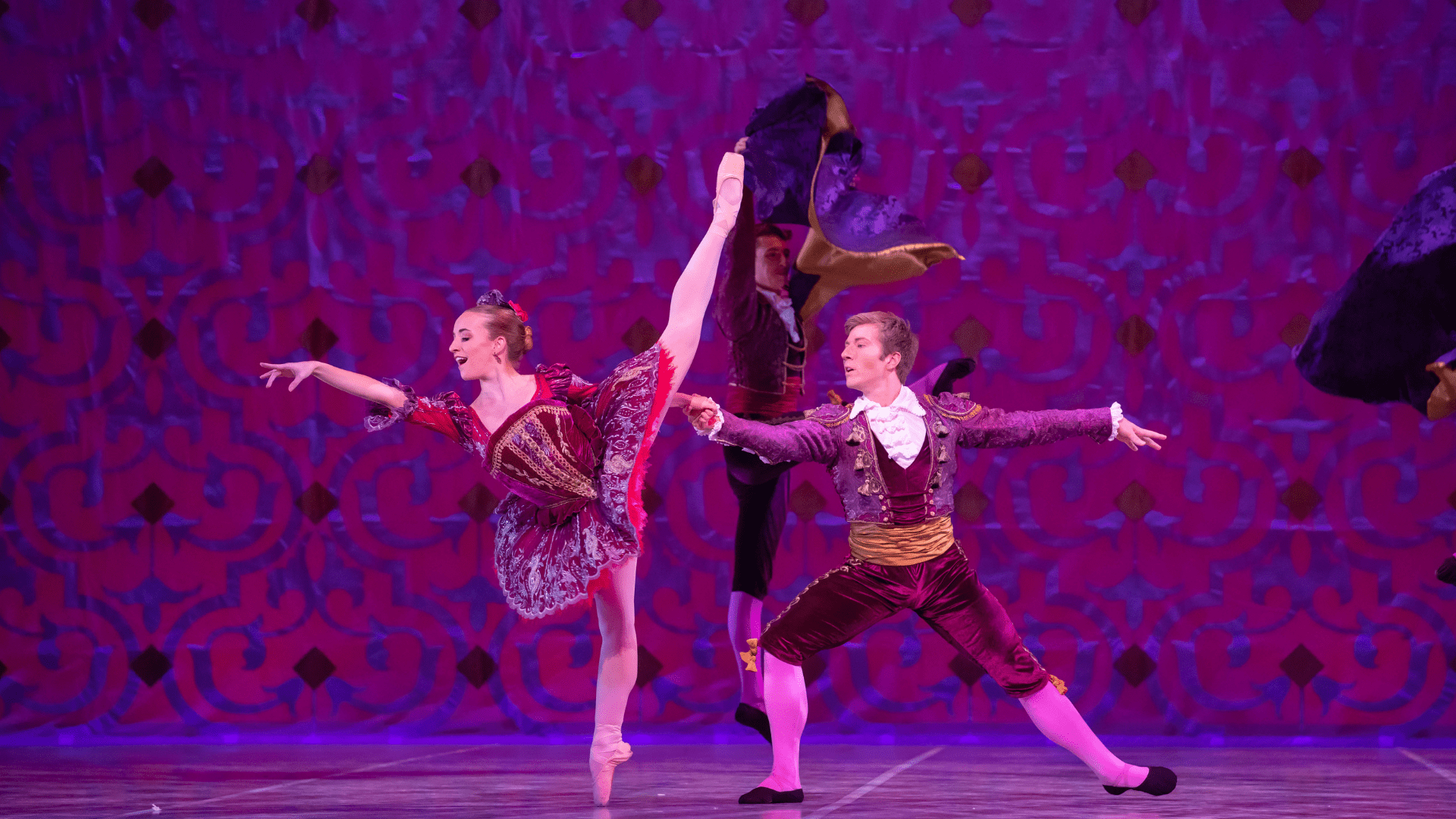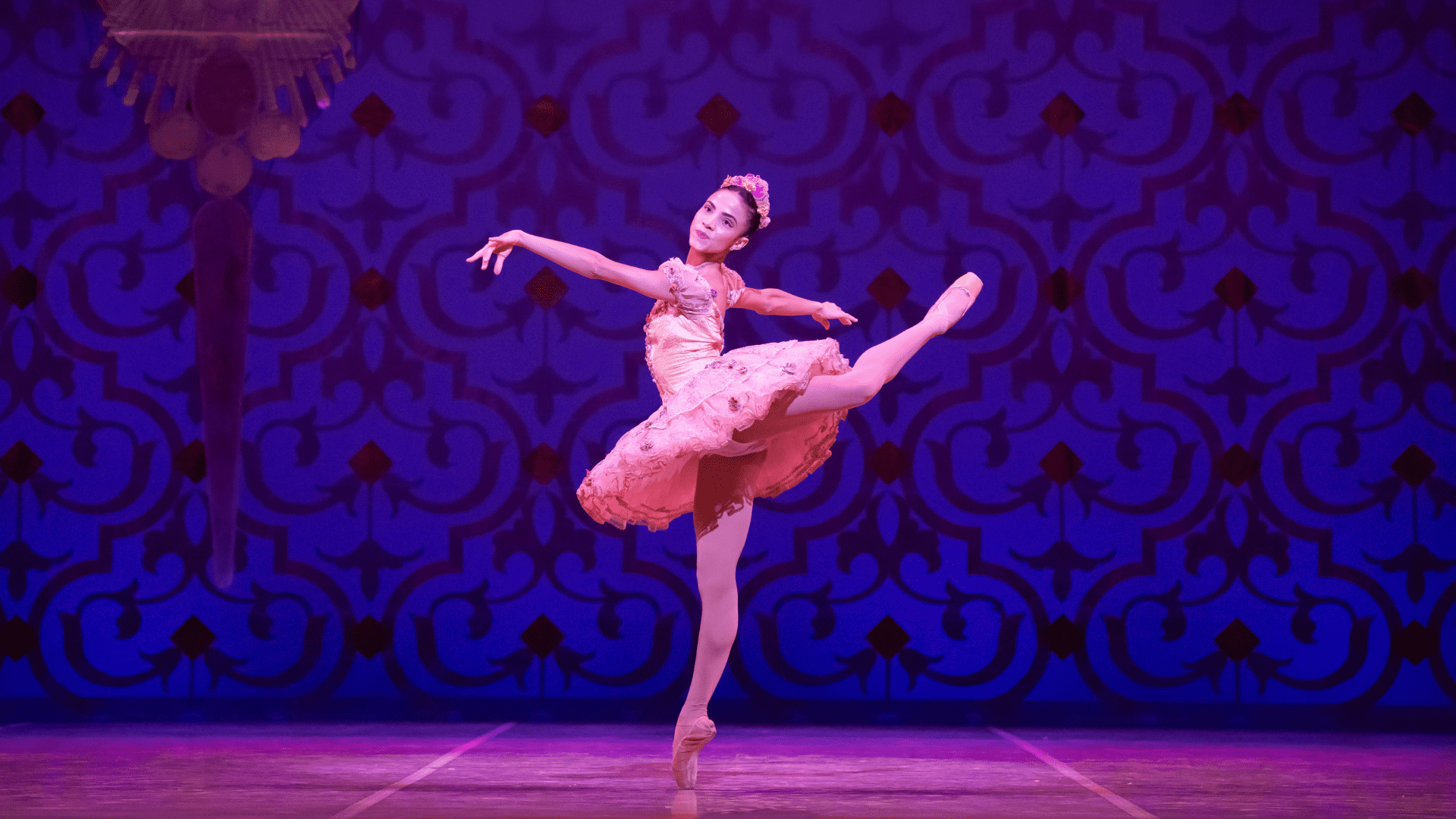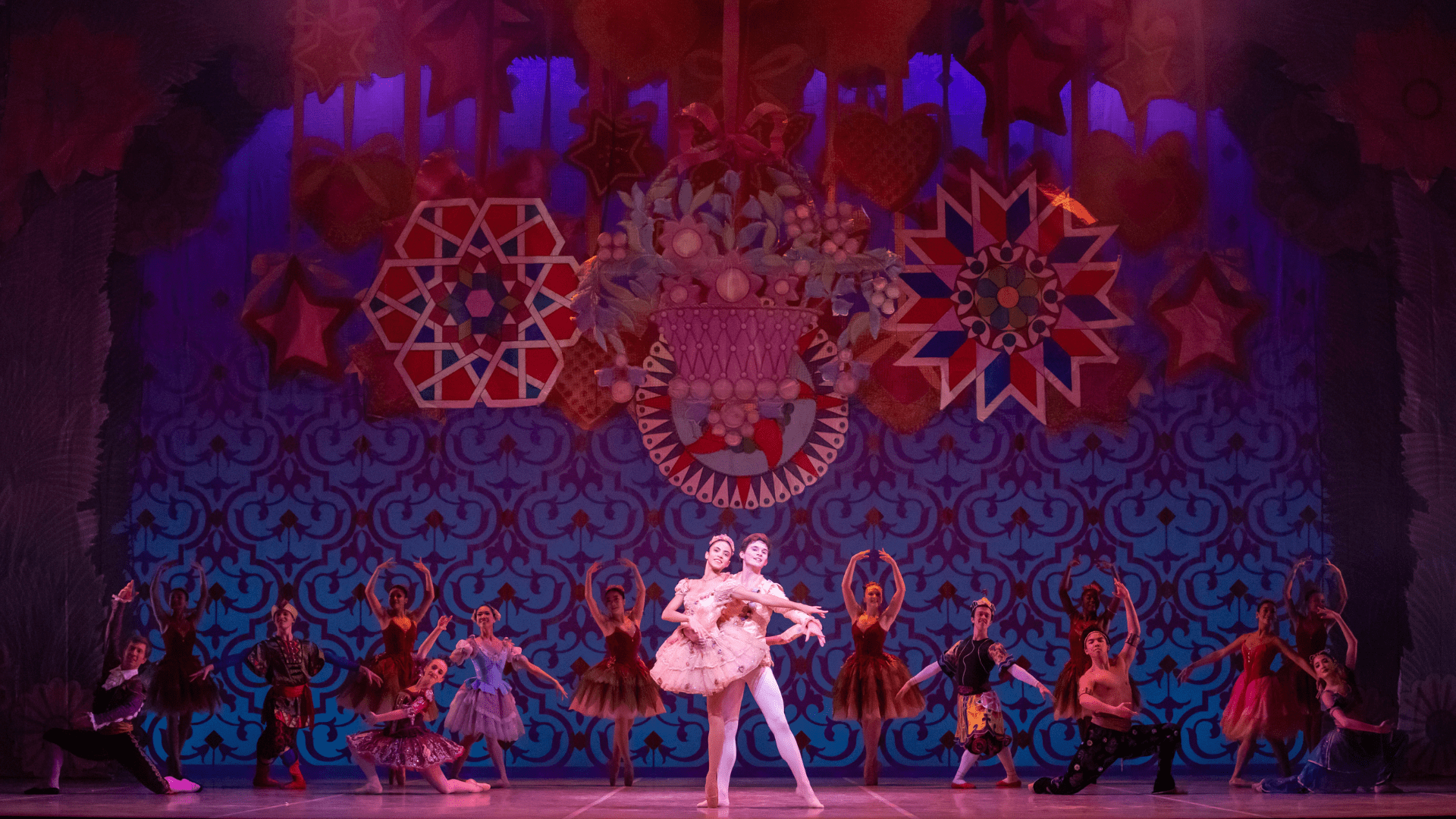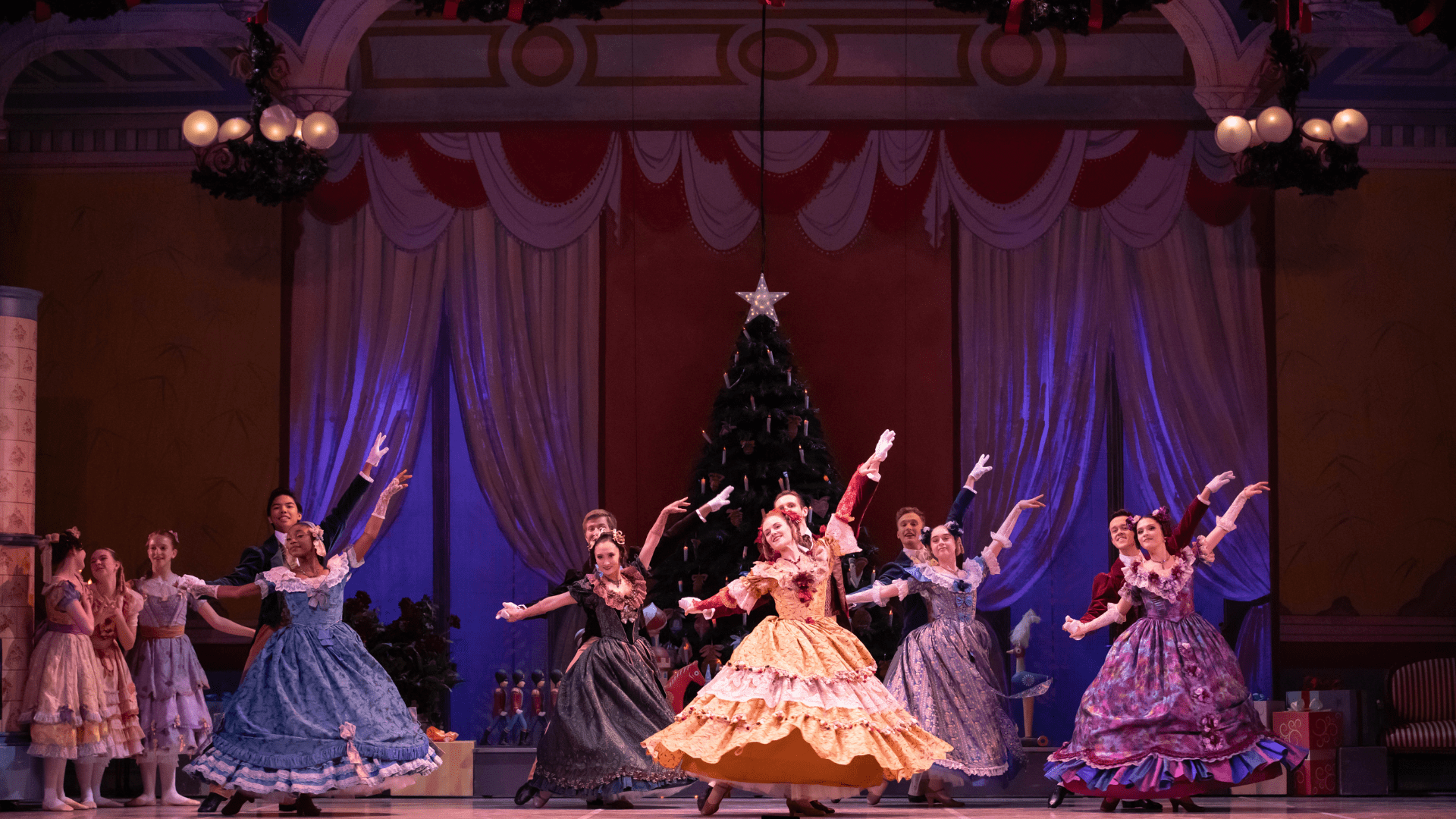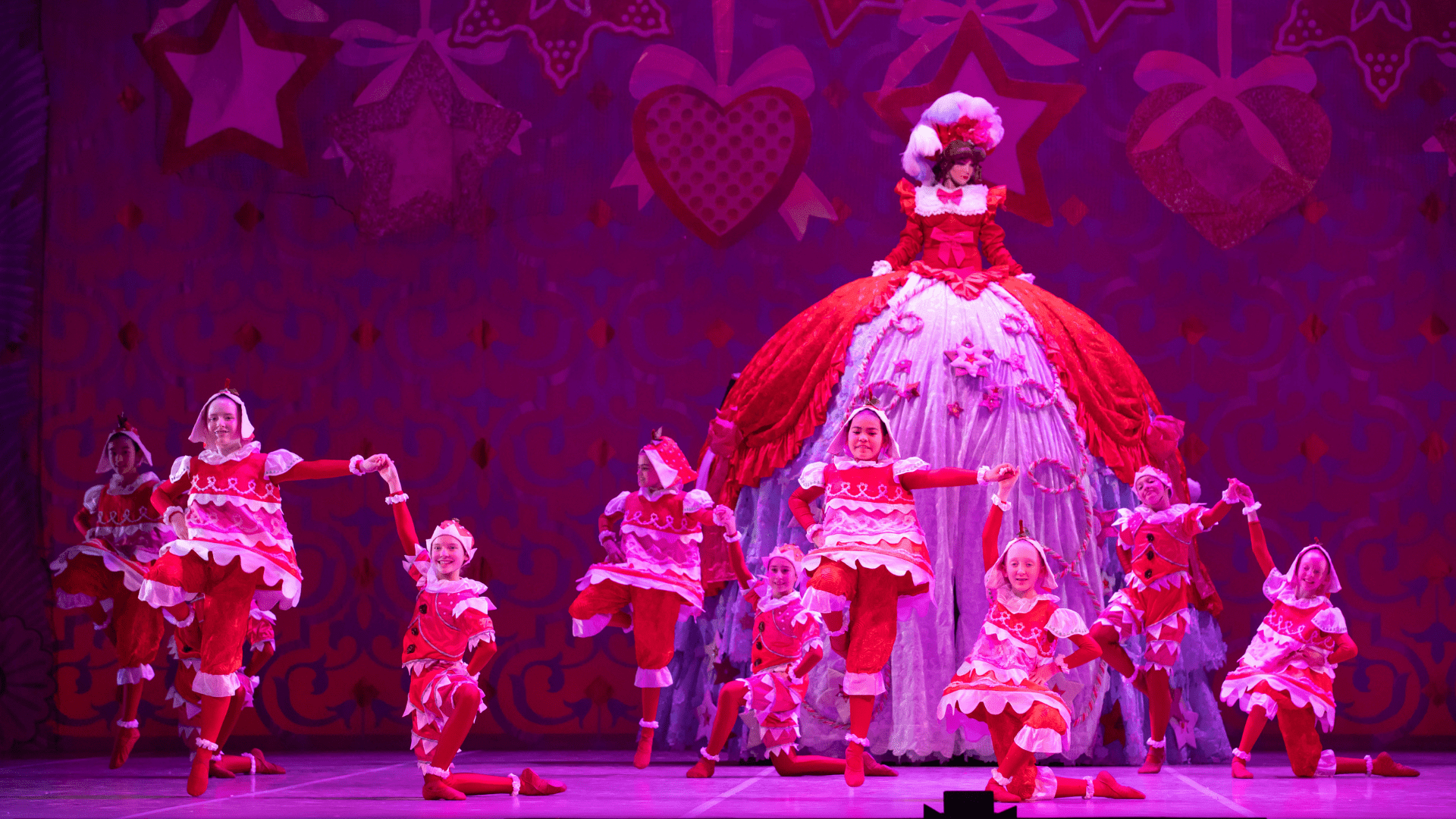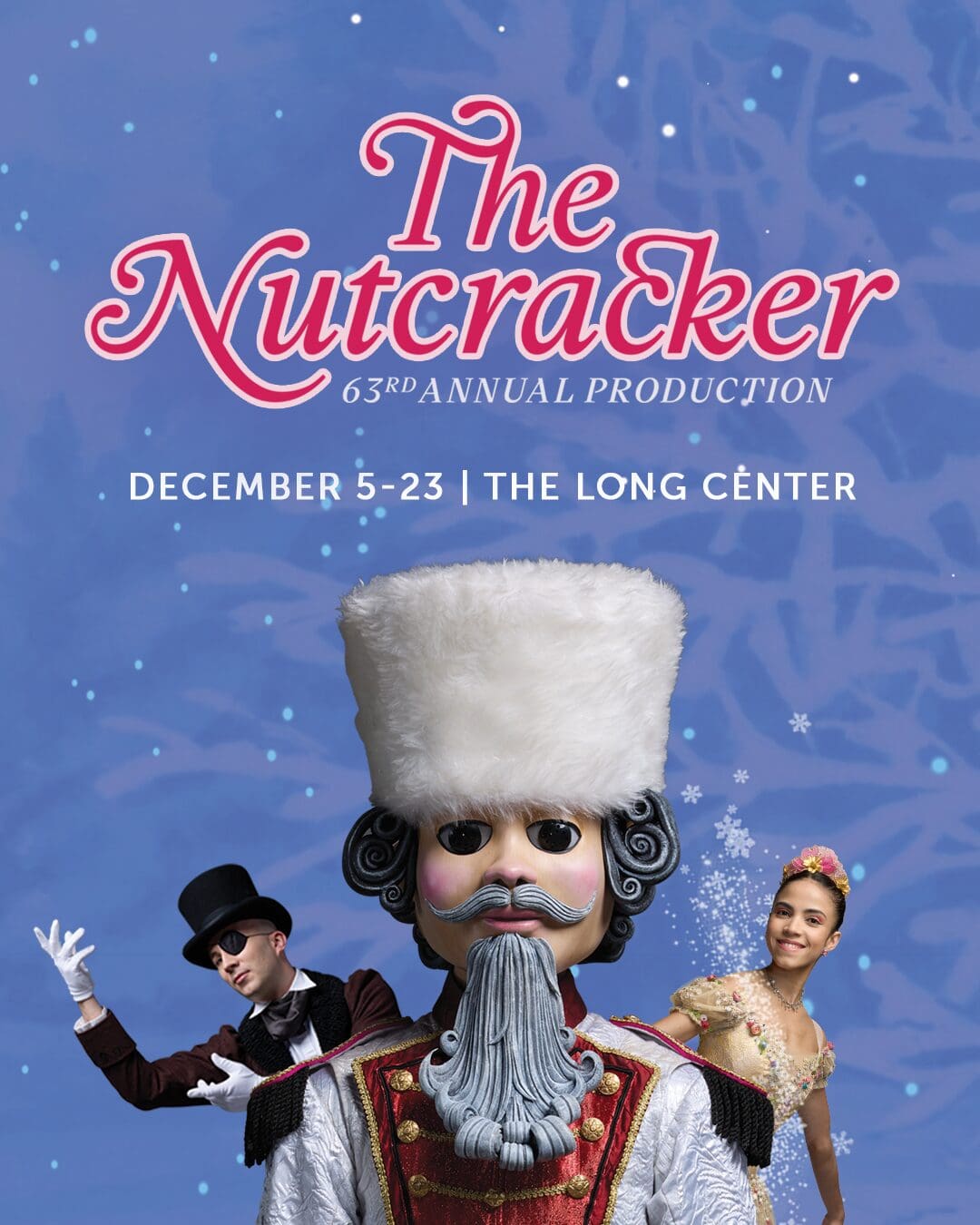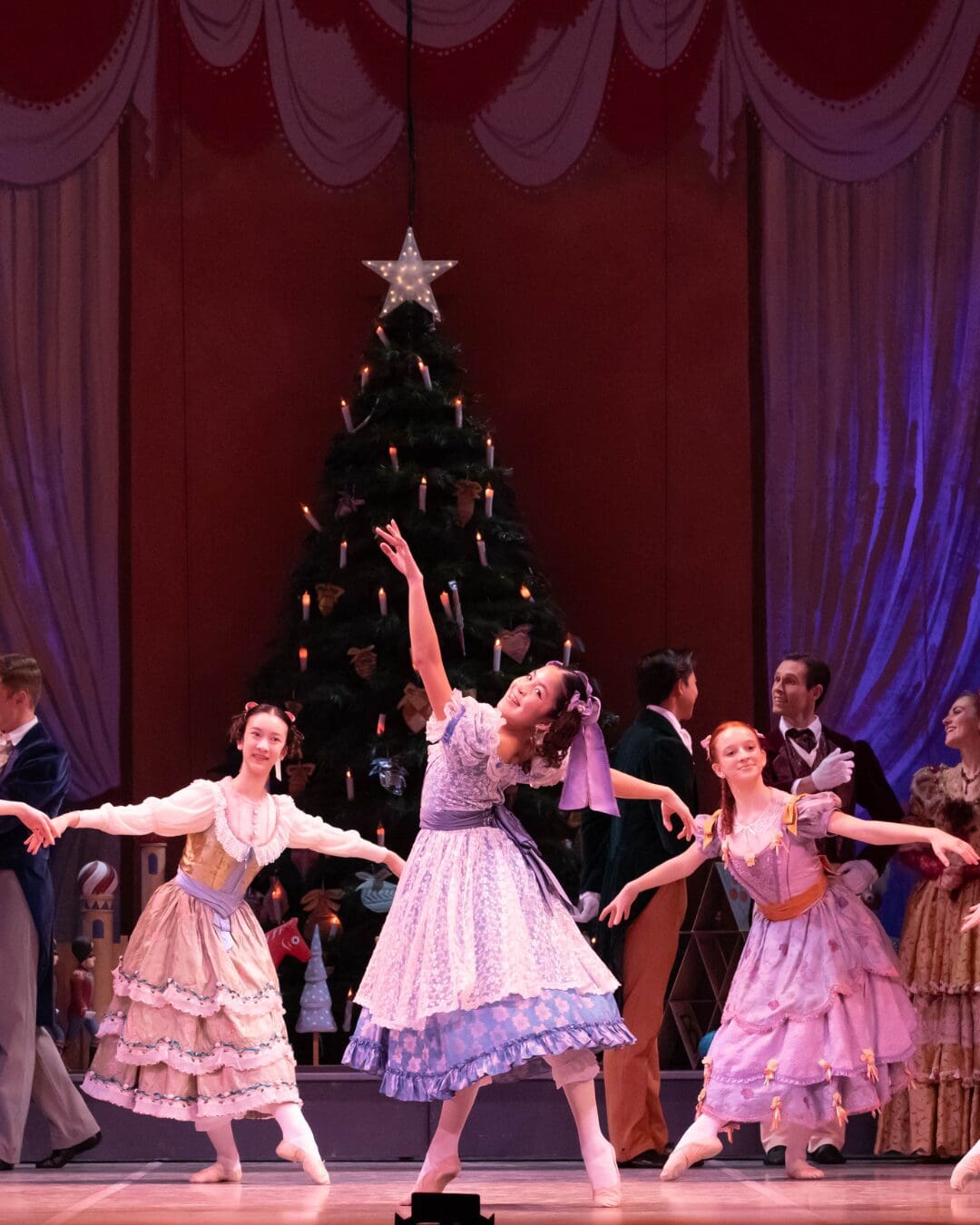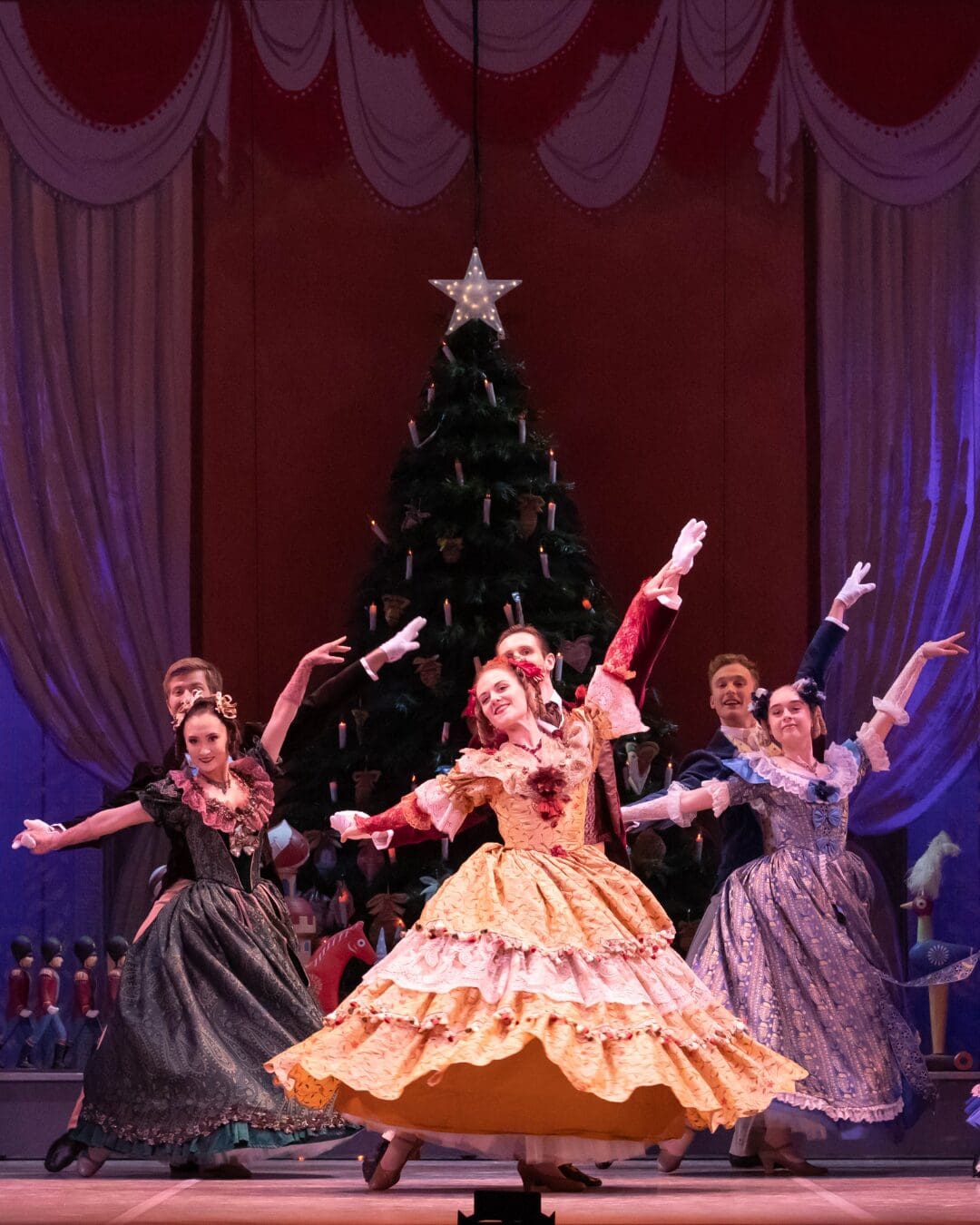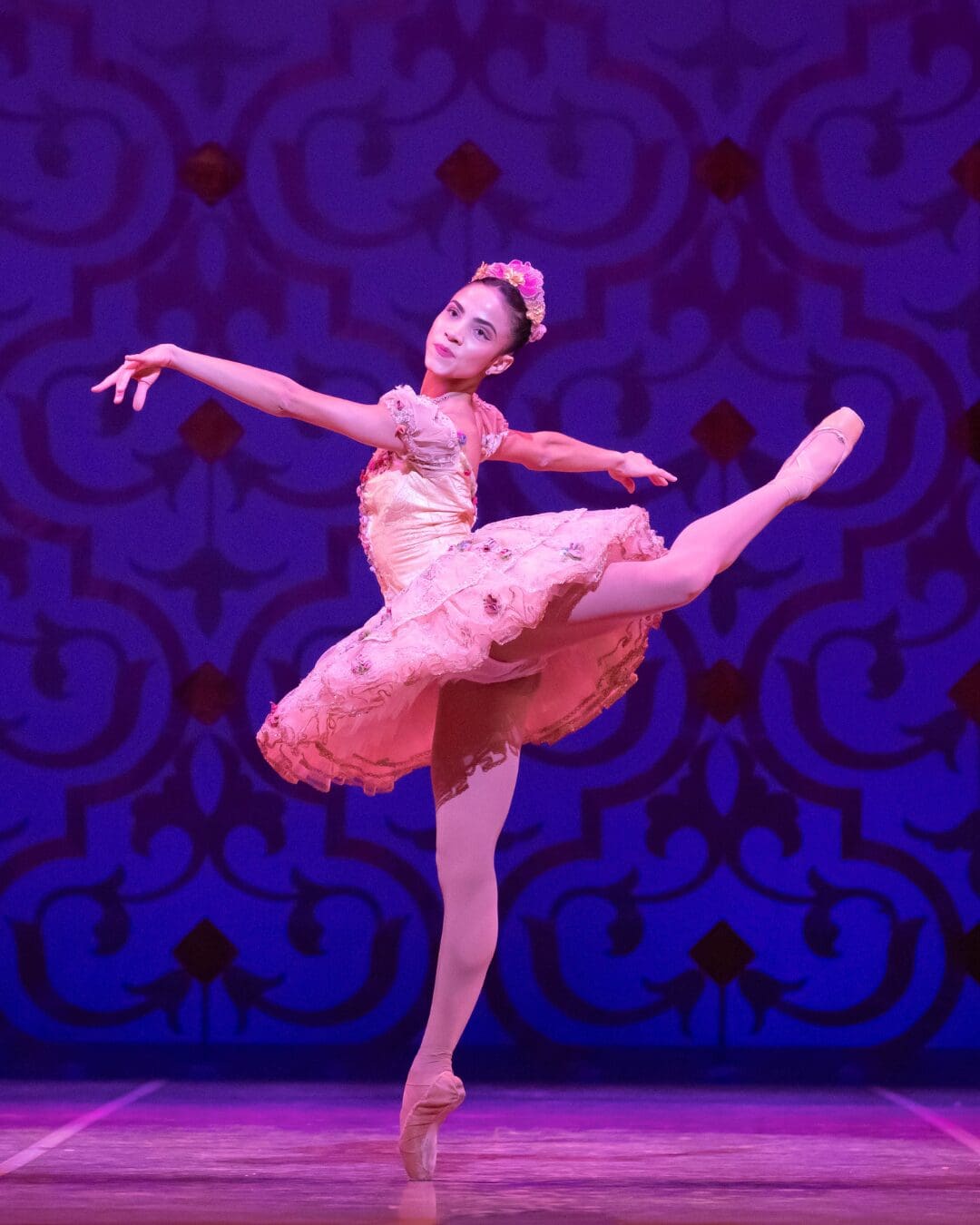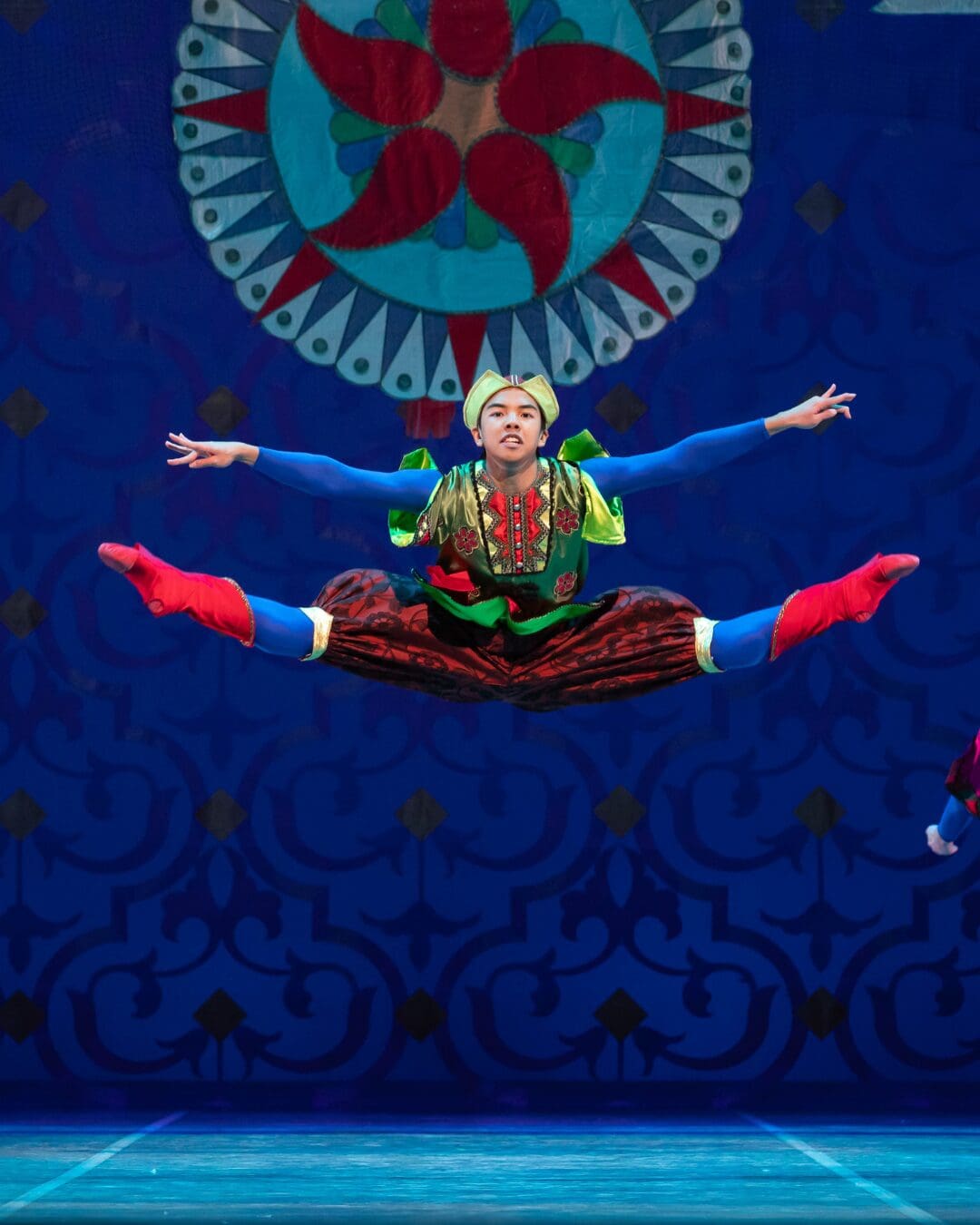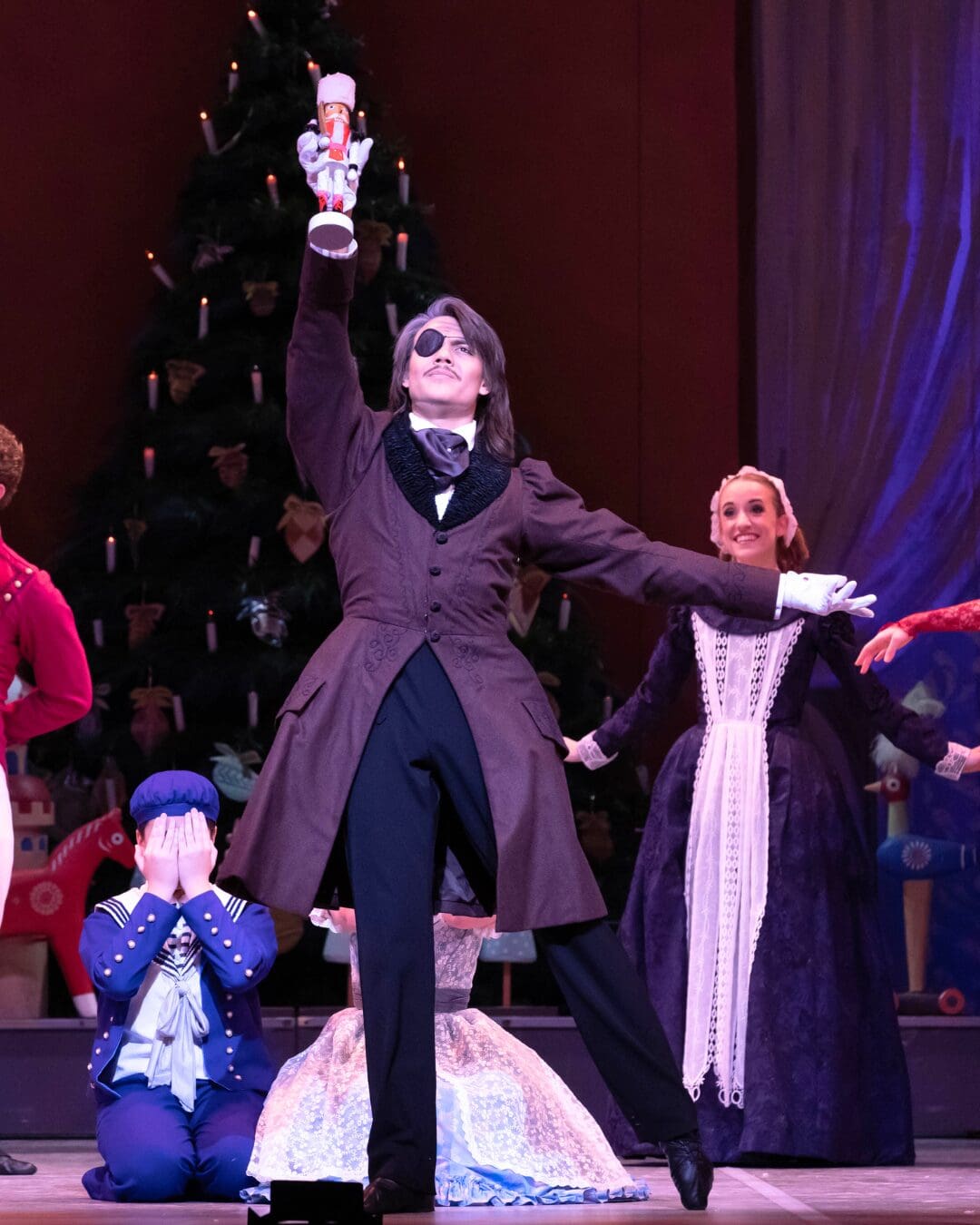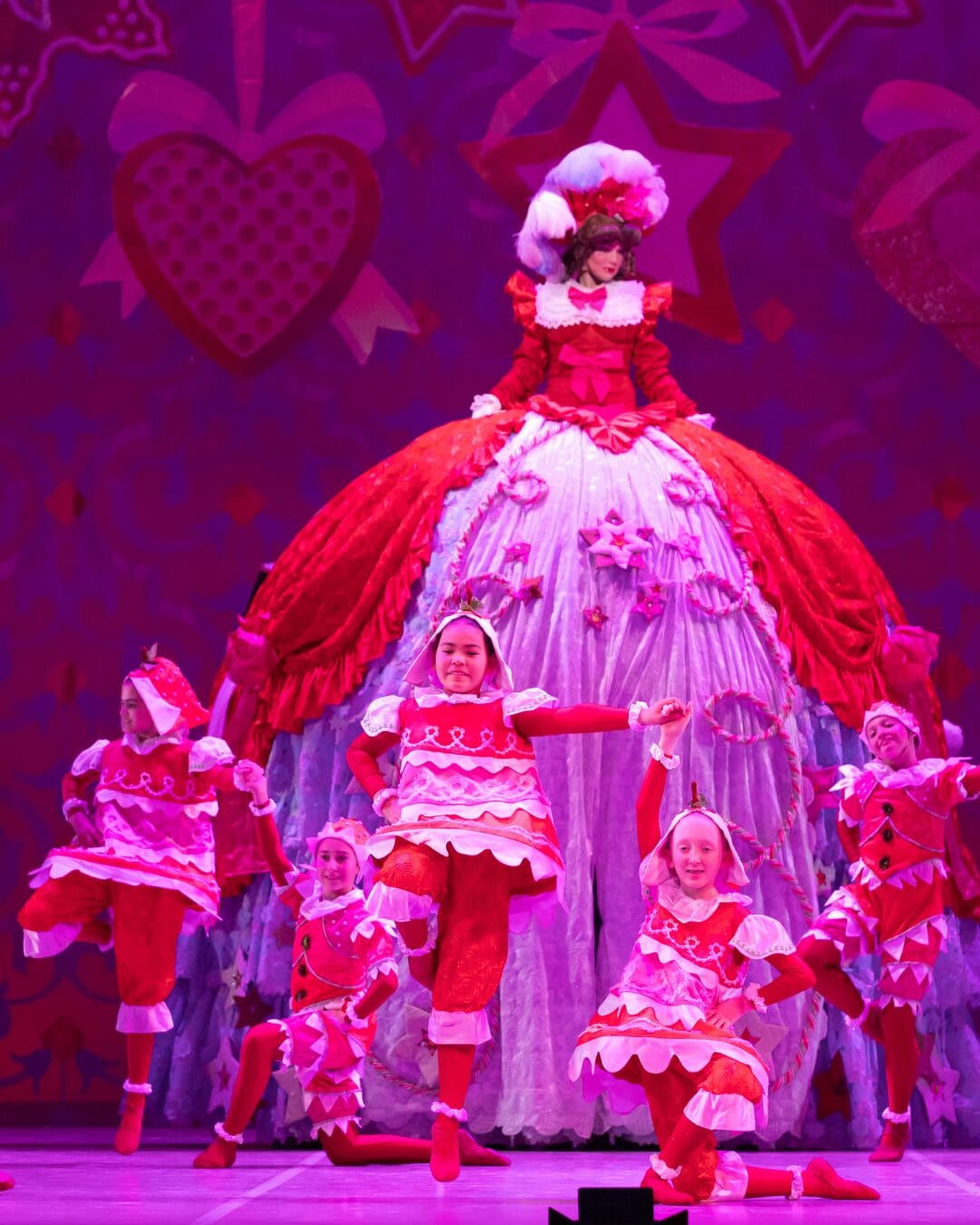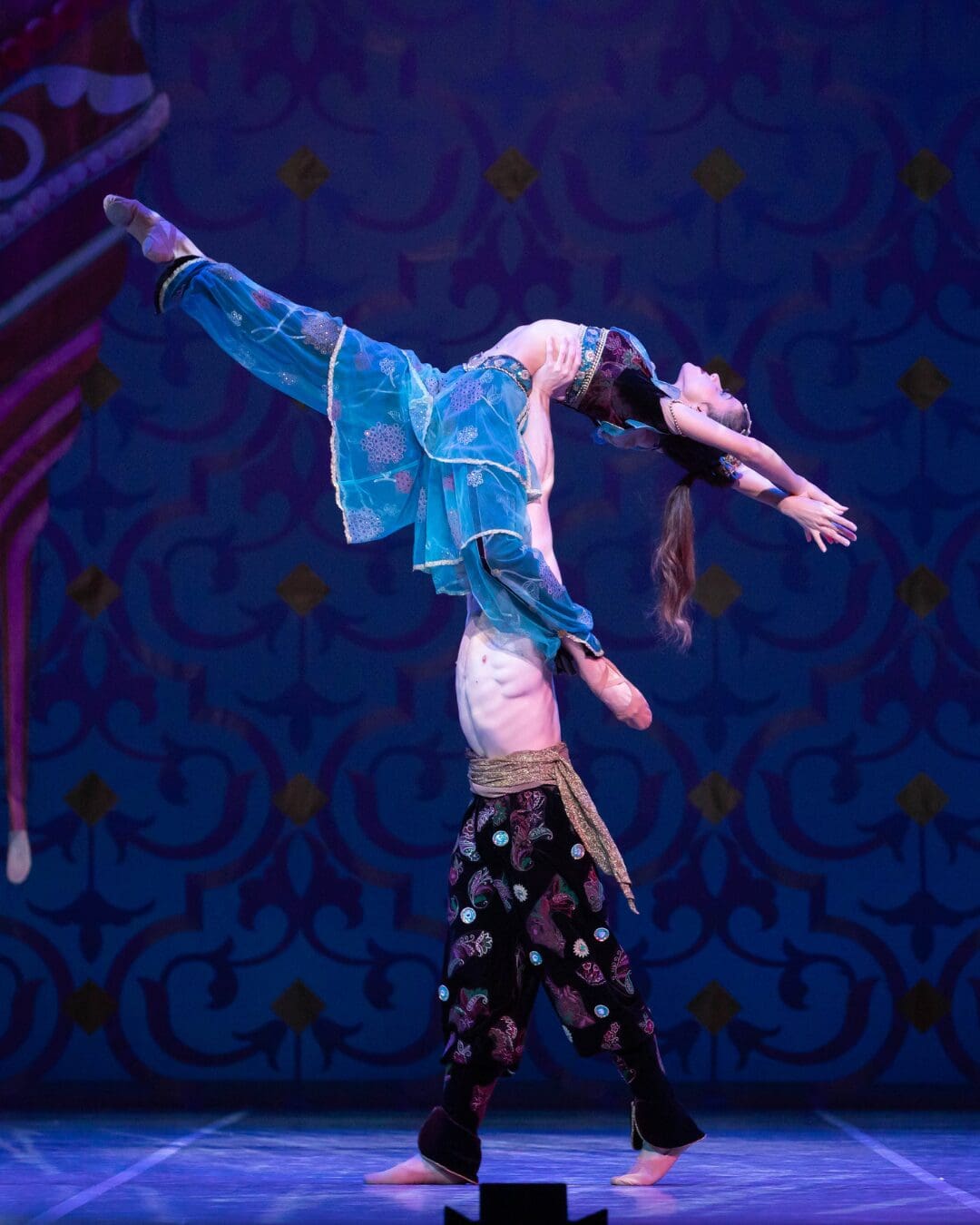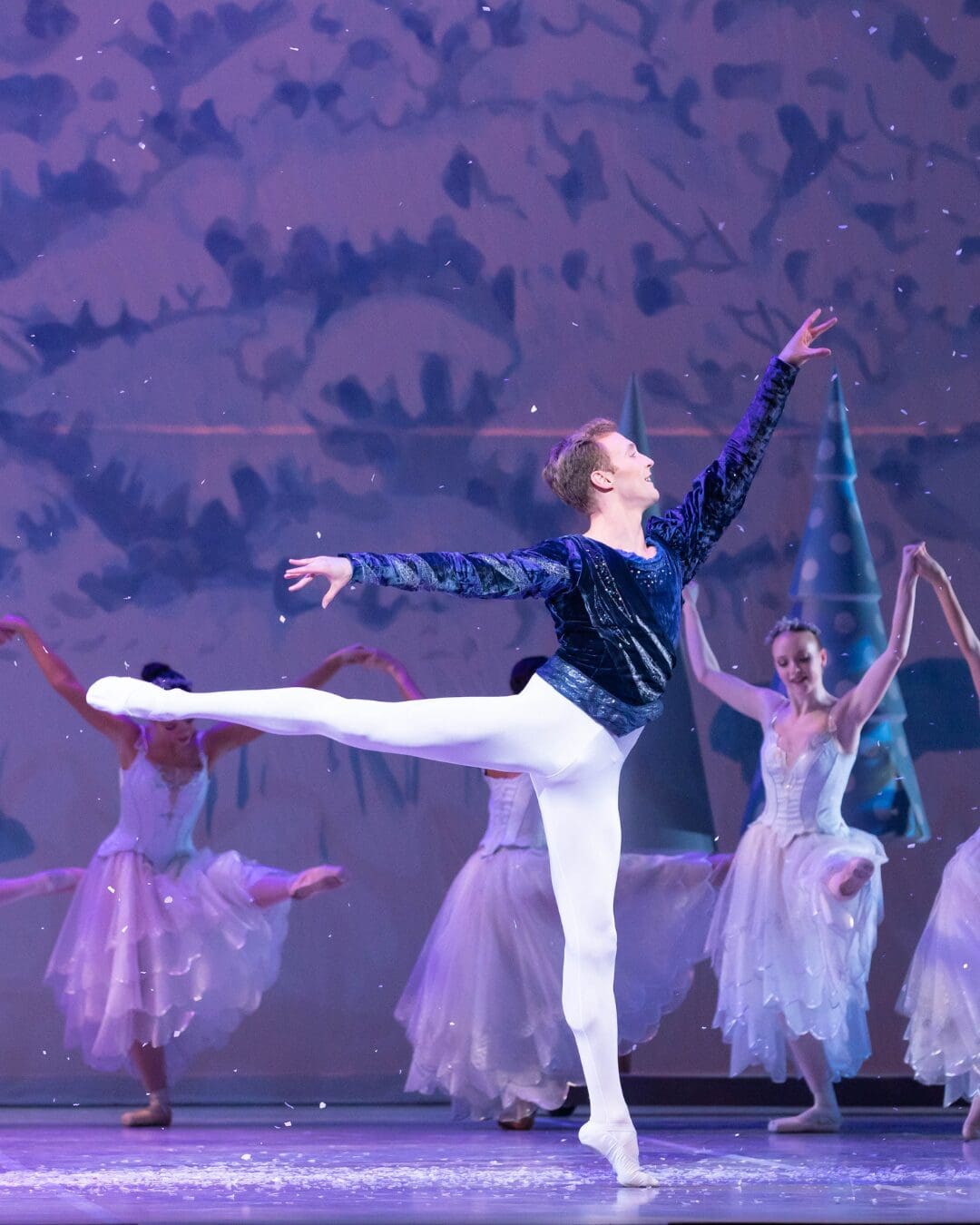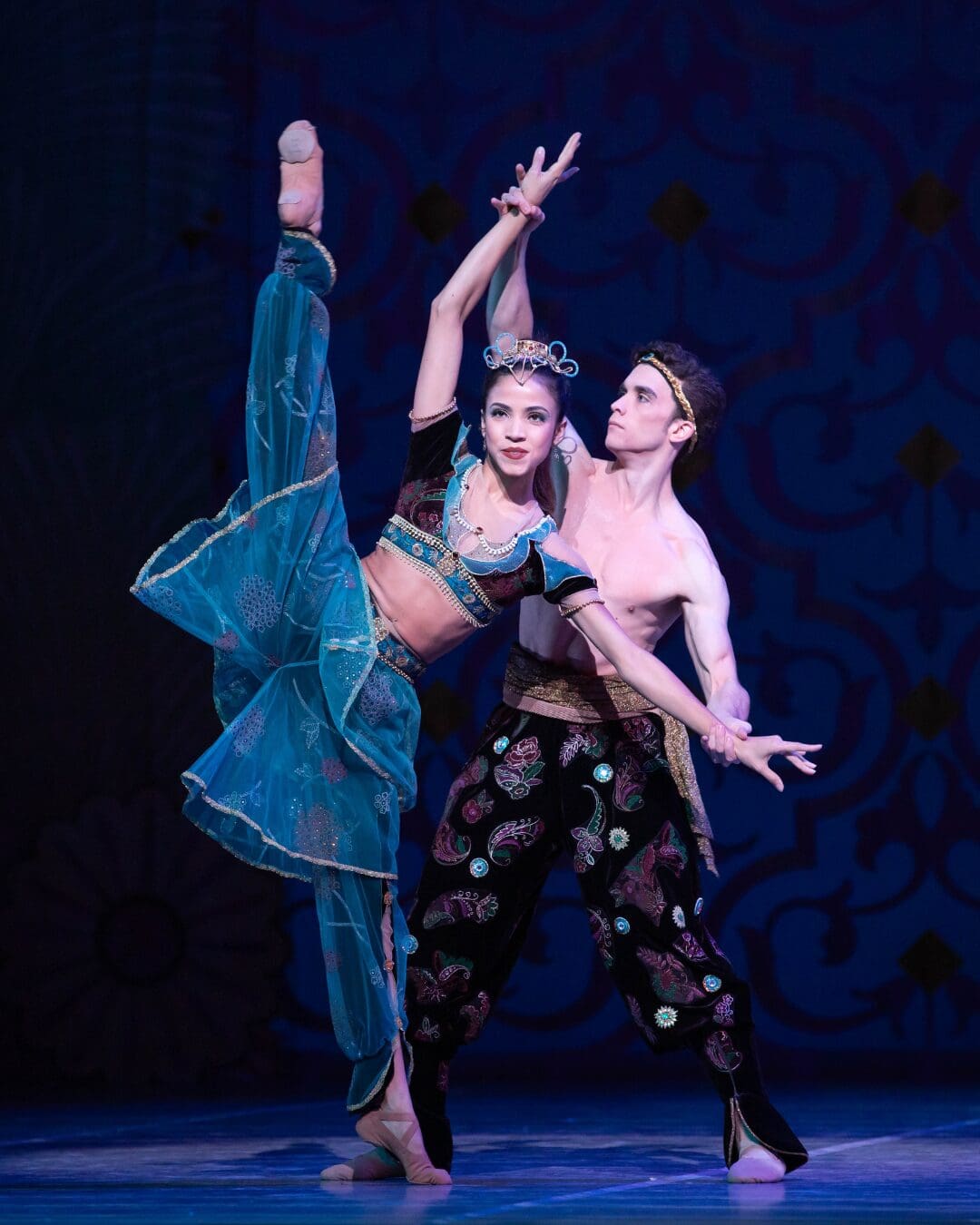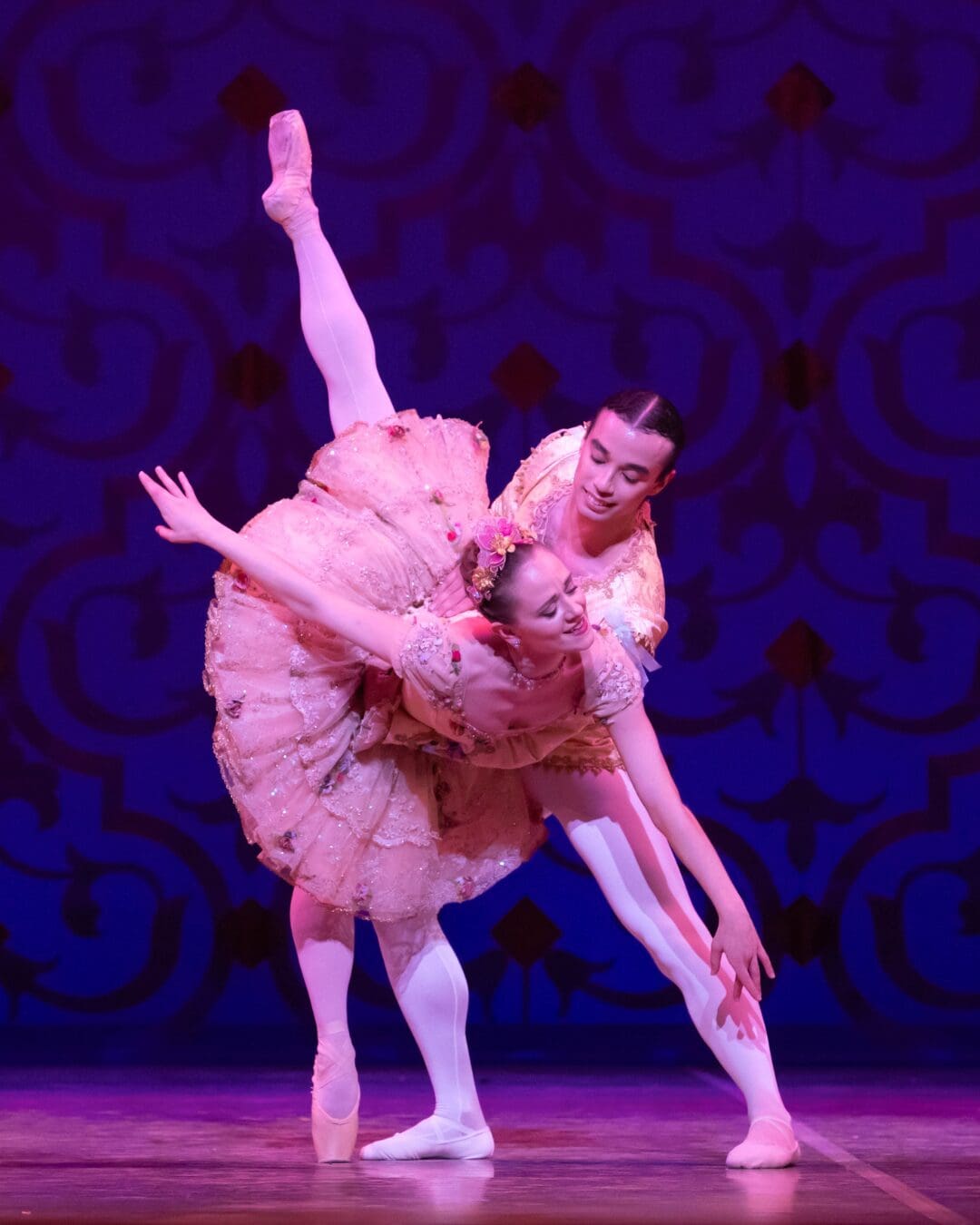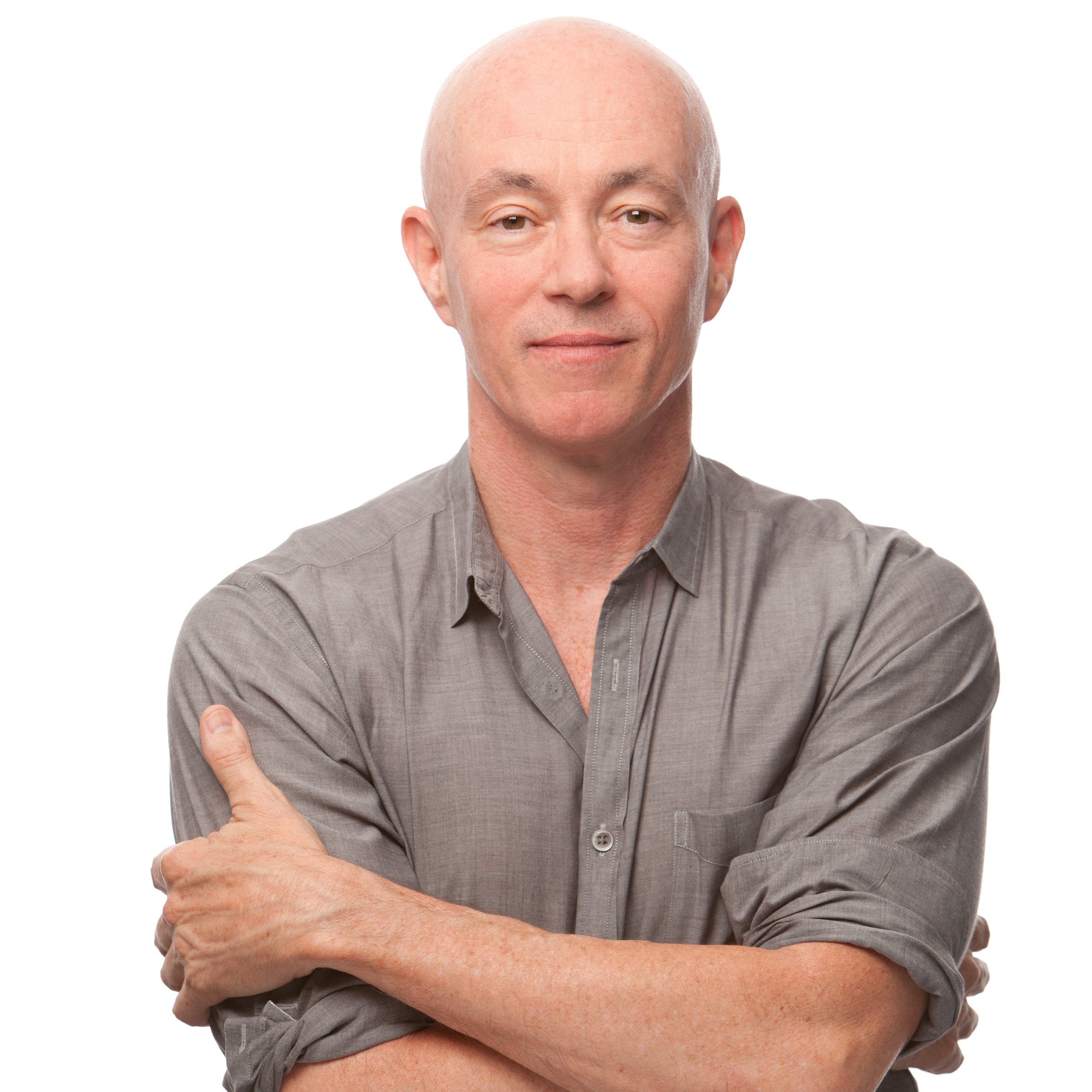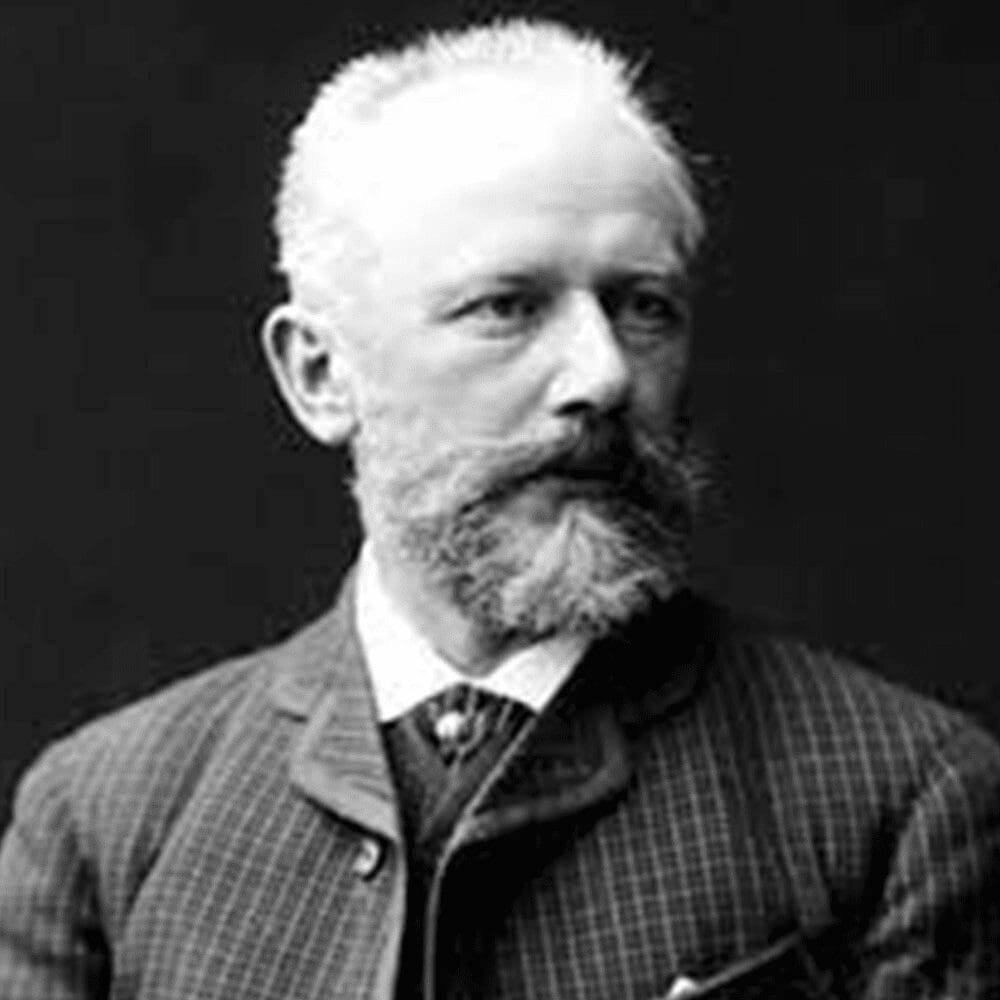Photos by Anne Marie Bloodgood
The Nutcracker
Concept & Choreography – Stephen Mills
Live Accompaniment – Austin Symphony Orchestra
Music – Pyotry Ilych Tchaikovsky
A treasured holiday tradition returns! Ballet Austin’s 63rd annual production of The Nutcracker is a dazzling spectacle filled with magic, wonder, and timeless charm. Follow Clara on her enchanting journey from a festive holiday party to the shimmering Land of Sweets, where she meets the dazzling Sugar Plum Fairy and the brave Nutcracker Prince. Featuring festive sets, exquisite costumes, and live accompaniment by the Austin Symphony Orchestra, this beloved classic creates cherished holiday memories year after year.
Dec. 5-23 | 15 Performances:
Opening Weekend
Friday, December 5, 2025 at 7:30 p.m.
Saturday, December 6, 2025 at 2:00 p.m.
Saturday, December 6, 2025 at 7:30 p.m.
Sunday, December 7, 2025 at 2:00 p.m.
Friday, December 12, 2025 at 7:30 p.m.
Saturday, December 13, 2025 at 2:00 p.m.
Saturday, December 13, 2025 at 7:30 p.m.
Sunday, December 14, 2025 at 2:00 p.m.
Thursday, December 18, 2025 at 7:30 p.m.
Friday, December 19, 2025 at 2:00 p.m.
Saturday, December 20, 2025 at 2:00 p.m.
Saturday, December 20, 2025 at 7:30 p.m.
Sunday, December 21, 2025 at 2:00 p.m.
Monday, December 22, 2025 at 2:00 p.m.
Tuesday, December 23, 2025 at 2:00 p.m.
The Nutcracker Trailer
THE FUN BEGINS BEFORE THE SHOW

Meet Us at the Welcome Center
Start your night right! Swing by the Welcome Center for a warm hello, insider tips, and a handy map to all the pre-show happenings. Located on the Orchestra level (east side terrace) and inside the Rollins Lobby. Come early—we’ll point you to the fun!

Snap Pics at the Selfie Stations
Lights, camera, curtain! Snap a pic at our themed selfie spots and tag @balletaustin for a chance to be featured. They’re scattered throughout the venue and out on the terrace—find them all and strike a pose!

Cocktails, Mocktails, & More!
Sip, savor, and soak it all in! Treat yourself to handcrafted specialty cocktails inspired by the performance, paired with “small bites” that are perfect for sharing. Then take your drink out to the terrace, where the stunning downtown skyline sparkles before you and the crisp autumn breeze sets the perfect mood for an unforgettable experience.

Take a Peek Behind the Ballet!

Behind the Ballet! Sponsor
Step into the magic before the curtain rises. This interactive pop-up space lets you explore pointe shoes, costumes, music, and more! It’s never the same twice, so even return visitors will find something new. Open 90 minutes before showtime and during intermission.

Learn More at Footlights

Footlights Sponsor
Want the inside scoop before the curtain rises? Join our knowledgeable staff for an engaging look at the story, themes, and creative process behind the performance. Starts 1 hour before showtime at theater entrances 23 & 24. It’s just 25 minutes—and a great way to deepen the experience.

Shop The Gift Barre
The perfect gift? It’s waiting at the Guild Gift Barre. From collectible Nutcrackers to t-shirts and festive ornaments, it’s your one-stop shop for holiday cheer and special souvenirs. Plus, every purchase supports Ballet Austin’s scholarship programs—feel-good gifting at its finest!
ACT I
FRAU SILBERHAUS
Dianetzy Rojas ……………………………………………………… Dec. 5, 7, 13 (7:30), 19, 21
Katherine Deuitch…………………………………..Dec. 6 (2:00), 12, 14, 20 (2:00), 22
Grace Morton ………………………………Dec. 6 (7:30), 13 (2:00), 18, 20 (7:30), 23
HERR SILBERHAUS
Leighton Taylor……………………………………………………. Dec. 5, 7, 13 (7:30), 19, 21
Morgan Stillman……………………………………..Dec. 6 (2:00), 12, 14, 20 (2:00), 22
Arnaldo Hernandez……………………..Dec. 6 (7:30), 13 (2:00), 18, 20 (7:30), 23
CLARA
Lisa Lule………………………………………..Dec. 6 (7:30), 13 (2:00), 18, 20 (7:30), 23
Allegra Johnson……………………………………..Dec. 6 (2:00), 12, 14, 20 (2:00), 22
Saki Takahashi ………………………………………………………..Dec. 5, 7, 13 (7:30), 19, 21
FRITZ
James Worden…………………………….Dec. 6 (7:30), 13 (2:00), 18, 20 (7:30), 23
Cole Heppner…………………………………………Dec. 6 (2:00), 12, 14, 20 (2:00), 22
Charlie Determan………………………………………………….Dec. 5, 7, 13 (7:30), 19, 21
DROSSELMEYER
Julius Taiber*
NEPHEW
Joshua Tyebkhan………………………………………Dec. 5, 7, 13 (7:30), 18, 19, 21, 23
Caleb Holt…………………………………………………….Dec. 6, 12, 13 (2:00), 14, 20, 22
GOVERNESS
Meg Kataoka ………………………Dec. 5, 6 (7:30), 7, 13, 18, 19, 20 (7:30), 21, 23
Alayna Lautner………………………………………..Dec. 6 (2:00), 12, 14, 20 (2:00), 22
GUESTS
Tuscany Bramwell, Maddie Brown, Katrina Chen, Alayna Hamade,
Grace Jaramillo, Amaya Joseph, Alyssa Manguiat, Nya Tinio-Mitchell,
Colin Canavan, Tristin Filsinger, Grayson Gallella, Colin Heino,
Kyawzwa Jeremy Lwin, Jack Morris
PARTY GIRLS
Phoebe Anderson, Lyla Barker, Valentina Bernal, Noelle Biven,
Natalie Chun, Julia Fagundes Lopes, Nydia (Sophie) Godreau,
Morrison (Emmy) Hewitt, Grace Jiang, Isabela Peña, Charlotte Prodel,
Isabella Rashidi, Georgia Siela, Katie Turner, Samrawit Waelbroeck,
Lily Wilcox, Kate Wright, Hannah Grace Wu
PARTY BOYS
Christopher Cox, Axton Gregory, Maxwell Snyder, Eli Tolin
DRESDEN DOLL
Alexandra Owens…………………………………………………..Dec. 5, 7, 13 (7:30), 19, 21
Meg Kataoka……………………………………………Dec. 6 (2:00), 12, 14, 20 (2:00), 22
Anika Crouser……………………………….Dec. 6 (7:30), 13 (2:00), 18, 20 (7:30), 23
PIERROT DOLL
Grayson Gallella …………………………………………………….Dec. 5, 7, 13 (7:30), 19, 21
Samuel Mayer…………………………………………Dec. 6 (2:00), 12, 14, 20 (2:00), 22
Marco Lorenzo-Giguere……………..Dec. 6 (7:30), 13 (2:00), 18, 20 (7:30), 23
MICE
Kamryn Baker, Sofia Caballero Poveda, Jane Cave, Chloe Chapman,
Abigail DeLocke, Isabella Hernando, Olivia Lee, Arielle Monette,
Belle Ouyang, Penelope Ramos, Jameson Sanford, Abigail Zamora-Flores
ANGELS
Cora Bowers, Reade Bynum, Lola Carter, Clara Cockrill, Esther Denning,
Lucy Eddings, Celeste Gaulin, Allegra Emmanuelle Gonzalez Adame, Cora
Herrera, Violet Ibarra, Lara Irmak, Lovie Messer, Adalyn Mobley, Mila Moffet,
Giorgia Mussi, Ayaan Osman, Sophie Pellegrini, Yixin Peng, Charlotte
Pruzan, Victoria Pugh, Hannah Sagebiel, Mabel Scroggins,
June Seales, Zoe Sweazea, June Trotter, Olive Volk, Josephine Welter,
Emily Wetz, Genevieve Zubovsky
NUTCRACKER PRINCE
Joshua Tyebkhan………………………………………Dec. 5, 7, 13 (7:30), 18, 19, 21, 23
Caleb Holt…………………………………………………….Dec. 6, 12, 13 (2:00), 14, 20, 22
RAT KING
Nathan Bender………………………………………….Dec. 5, 7, 13 (7:30), 18, 19, 21, 23
Avery Wood………………………………………………….Dec. 6, 12, 13 (2:00), 14, 20, 22
RATS
Kayla Acevedo, Nathan Bender, Kyla Guay, Caleb Holt, Rowen Moore,
Joshua Tyebkhan, Lucy Williams, Avery Wood
TOY SOLDIERS
Joanna Brown, Hana Cornali, Phoebe Herbert, Miriam Hultgren,
Caroline Hunter, Abigail Lane, Emily Mosser Knight, Mia Naik, Sadie
Sarrat, Kiera Thompson, Hannah Vale, Allie Wright
CAVALRY
Sophia Bergara, Dylan Skye Bosh, Klara Campbell, Emma Campos,
Felicia Gurrola, Marie Esther Johnson, Ava Mason, Kaia Grace Meade,
Vesper Moreno, Juliet Nichols, Stella Scroggins, Gemariah “Peach” Smith
SNOW QUEEN
Alyssa Manguiat……………………………………………………..Dec. 5, 7, 13 (7:30), 19, 21
Anika Crouser………………………………………….Dec. 6 (2:00), 12, 14, 20 (2:00), 22
Lexi Eicher…………………………………….Dec. 6 (7:30), 13 (2:00), 18, 20 (7:30), 23
SNOW KING
Jack Morris …………………………………………………………….Dec. 5, 7, 13 (7:30), 19, 21
Colin Canavan………………………………………..Dec. 6 (2:00), 12, 14, 20 (2:00), 22
Kyawzwa Jeremy Lwin………………..Dec. 6 (7:30), 13 (2:00), 18, 20 (7:30), 23
SNOWFLAKES
Angelina Carbonaro, Tuscany Bramwell, Maddie Brown, Katrina Chen,
Zoey Amanda Chew, Alayna Hamade, Grace Jaramillo, Amaya Joseph,
Alayna Lautner, Gigi McDowell, Hina Oshima, Emily Saffos,
Ryan Smallwood, Nya Tinio-Mitchell, Olivia Vega
ACT II
SUGAR PLUM FAIRY
Katherine Deuitch………………………………………………….Dec. 5, 7, 13 (7:30), 19, 21
Grace Morton …………………………………………Dec. 6 (2:00), 12, 14, 20 (2:00), 22
Dianetzy Rojas ……………………………..Dec. 6 (7:30), 13 (2:00), 18, 20 (7:30), 23
CAVALIER
Morgan Stillman…………………………………………………….Dec. 5, 7, 13 (7:30), 19, 21
Arnaldo Hernandez………………………………..Dec. 6 (2:00), 12, 14, 20 (2:00), 22
Leighton Taylor…………………………….Dec. 6 (7:30), 13 (2:00), 18, 20 (7:30), 23
CHOCOLATE
Anika Crouser, Tristin Filsinger………………………………Dec. 5, 7, 13 (7:30), 19, 21
Lexi Eicher, Jack Morris………………………….Dec. 6 (2:00), 12, 14, 20 (2:00), 22
Alexandra Owens, Colin Canavan……….Dec. 6 (7:30), 13 (2:00), 18, 20 (7:30), 23
Nathan Bender, Grayson Gallella, Caleb Holt, Marco Lorenzo-Giguere,
Samuel Mayer, Joshua Tyebkhan, Avery Wood
COFFEE
Grace Morton, Colin Heino………………………………….Dec. 5, 7, 13 (7:30), 19, 21
Dianetzy Rojas, Kyawzwa Jeremy Lwin……. Dec. 6 (2:00), 12, 14, 20 (2:00), 22
Meg Kataoka, Morgan Stillman…..Dec. 6 (7:30), 13 (2:00), 18, 20 (7:30), 23
TEA
Marco Lorenzo-Giguere……………………………………….Dec. 5, 7, 13 (7:30), 19, 21
Grayson Gallella ……………………………………..Dec. 6 (2:00), 12, 14, 20 (2:00), 22
Samuel Mayer………………………………Dec. 6 (7:30), 13 (2:00), 18, 20 (7:30), 23
Carla Ames-Corral, Ilex Chang, Ethan Fallon, Stella Johnson, Lucia
Kugler, Ellis Lowry, Mary Austin McKenna, Willow McQueen,
Brooke Montejano, Anastasia “Ana Beth” Myers, Mila Ostrovich,
Misha Patel, Cecelia Pellegrini, Scarlett Petty, Alexia Rashidi,
Sophia Sanders, Avalon Shattuck, Katelyn Shopp, Asa Sundstrom,
Piper Uccello, Solveig Weatherl, Lulu West, Karis Wu, Carmyn Zoghby
TREPAK
Kyawzwa Jeremy Lwin………………………………………….Dec. 5, 7, 13 (7:30), 19, 21
Samuel Mayer…………………………………………Dec. 6 (2:00), 12, 14, 20 (2:00), 22
Tristin Filsinger………………………………Dec. 6 (7:30), 13 (2:00), 18, 20 (7:30), 23
Nathan Bender, Caleb Holt, Joshua Tyebkhan, Avery Wood
MARZIPAN
Meg Kataoka…………………………………………………………..Dec. 5, 7, 13 (7:30), 19, 21
Colin Heino …………………………………………….Dec. 6 (2:00), 12, 14, 20 (2:00), 22
Marco Lorenzo-Giguere……………..Dec. 6 (7:30), 13 (2:00), 18, 20 (7:30), 23
Kayla Acevedo, Kyla Guay, Gigi McDowell, Hina Oshima, Lucy Williams
BON-BONS
Teresa Angulo, Mila Atamas, Arya Barnes, Aria Barton, Dahlia Bekanich,
Emma Breed, Cassidy Burke, Pierce Bynum, Caroline Campos,
Vivienne Castro, Grace Cohen, Elizabeth Fric, Wren Furrh,
Victoria Guerrero-Montes, Katriel Hwang, Ximena Jimenez,
Melian Johnson, Sose Jade Johnson, Valentina Litchfield,
Victoria Livescu, Caroline McShane, Caroline Moss, Phoebe Newhouse,
Teresa Peña, Hera Robichaux, Clara Santana, Amelia Seibert,
Natalia Soltero, Yahxyiel Stephens, Valentina Tapia, Talia Tatman,
Eva Belle Terrazas, Nora Thompson
WALTZ OF THE FLOWERS
Amaya Joseph……………………………………………………….Dec. 5, 7, 13 (7:30), 19, 21
Alexandra Owens……………………………………Dec. 6 (2:00), 12, 14, 20 (2:00), 22
Angelina Carbonaro…………………….Dec. 6 (7:30), 13 (2:00), 18, 20 (7:30), 23
Tuscany Bramwell, Maddie Brown, Katrina Chen, Zoey Amanda Chew,
Alayna Hamade, Grace Jaramillo, Alayna Lautner, Ryan Smallwood,
Emily Saffos, Nya Tinio-Mitchell, Olivia Vega
MOTHER GINGER CAST
SHARON VIGIL
CEO, Communities In
Schools of Central Texas
Thursday, Dec. 4, 7:30 pm
(Night of Community)
MIKE WHITE
Head Softball Coach, UT Austin
Friday, Dec. 5, 7:30 pm
VANESSA FUENTES
Mayor Pro Tem, City of Austin
Saturday, Dec. 6, 2:00 pm
DEBRA WELLS
Photographer
Saturday, Dec. 6, 7:30 pm
DELIA GARZA
County Attorney, Travis County
Sunday, Dec. 7, 2:00 pm
FOZZY WHITAKER
ESPN Analyst and Former NFL &
Texas Longhorn Football Player
Friday, Dec. 12, 7:30 pm
MARC MULLINS
Anchor, KVUE News
Saturday, Dec. 13, 2:00 pm
AARON FRANKLIN
Co-owner, Franklin BBQ
Saturday, Dec. 13, 7:30 pm
CHET GARNER
Creator & Host, The Day Tripper
Sunday, Dec. 14, 2:00 pm
VIC SCHAEFER
Head Women’s Basketball
Coach, UT Austin
Thursday, Dec. 18, 7:30 pm
LAUREN PETROWSKI
Television Host and
Content Creator
Friday, Dec. 19, 2:00 pm
ANGELA MEANS
Director, Austin Arts, Culture,
Music & Entertainment,
City of Austin
Saturday, Dec. 20, 2:00 pm
WILL BRIDGES
Co-owner, Antone’s Nightclub
Saturday, Dec. 20, 7:30 pm
FORREST PREECE
Ballet Austin Board Member &
Consulting Dilettante
Sunday, Dec. 21, 2:00 pm
JEREMY MARTIN
President & CEO,
Austin Chamber of Commerce
Monday, Dec. 22, 2:00 pm
J.B. SAUCEDA
Executive Producer and Host,
Texas Country Reporter
Tuesday, Dec. 23, 2:00 pm
Opening Weekend ONLY Enjoy…
December 5-7
Kick off the season with extra-magical moments available only during Opening Weekend. Come early and step into a swirl of holiday joy—sparkle, excitement, and memory-making all around you before the curtain even rises.
Complimentary Holiday Photos
Capture the spirit of the season with FREE professional holiday photos—the perfect keepsake to mark your Nutcracker tradition. Come early, strike a pose, and consider your holiday card officially checked off the list.
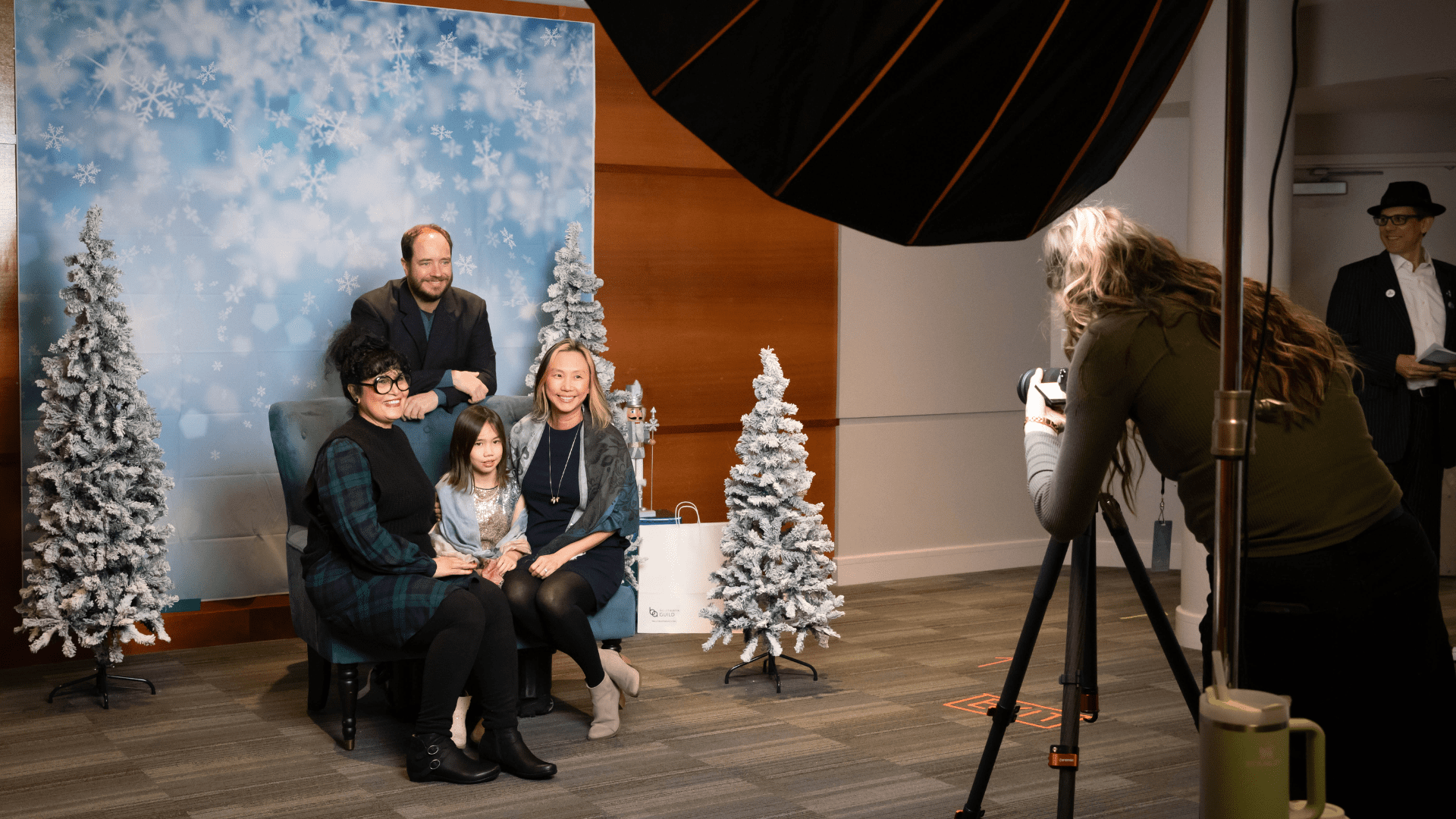
Character Cameos in the Lobbies
Keep an eye out for surprise appearances from beloved characters as they make their way through the theater. From mischievous mice to soldiers, bonbons, and more, little ones will light up seeing the magic come to life before the performance even begins.
Look for Tea, Mouse, Soldier, and Bon-Bon as they journey through the pre-show festivities. It’s a whimsical procession you won’t want to miss!
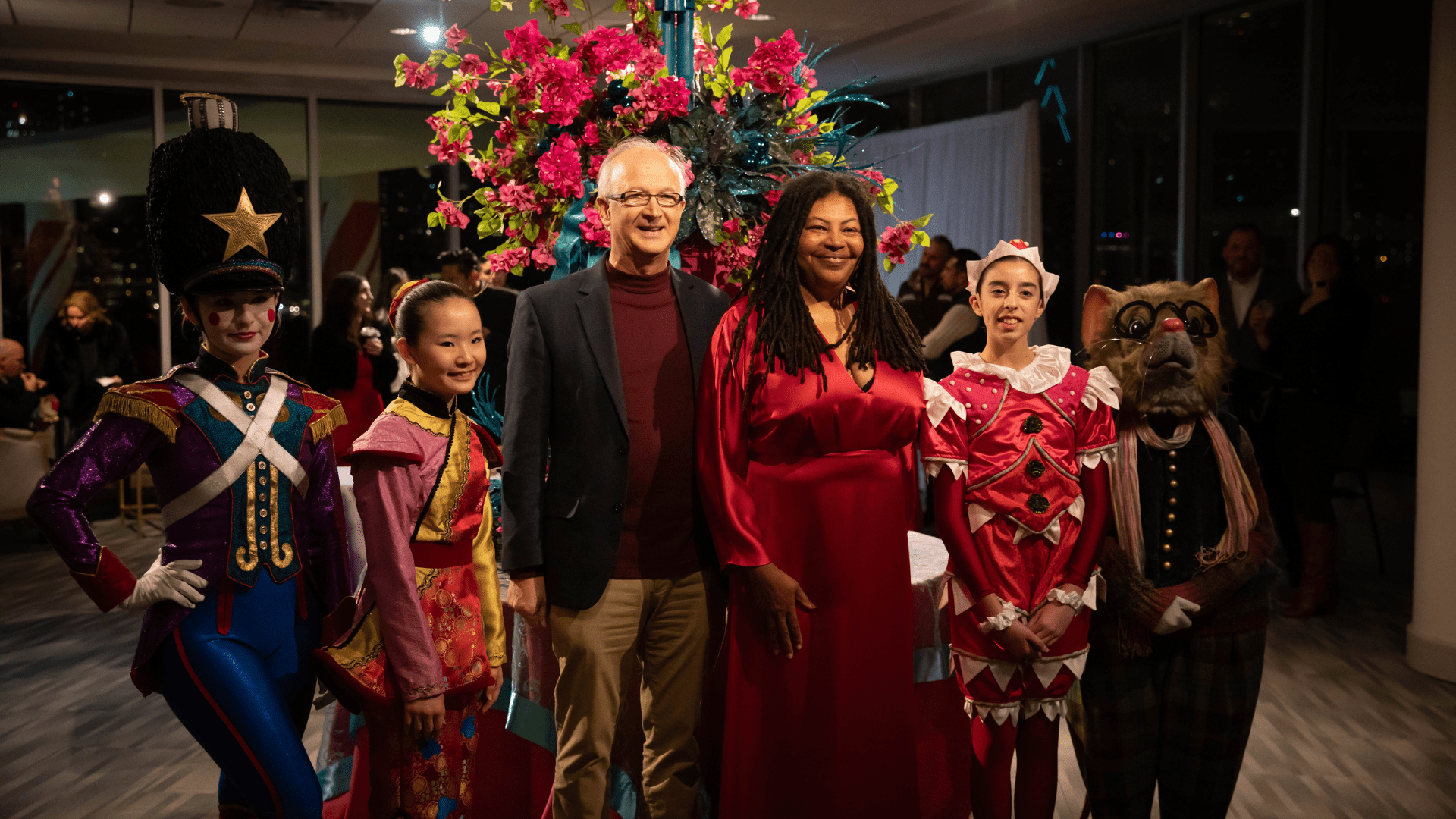
Meet & Greet With Clara
Say hello to Clara! Strike a pose and capture a magical moment with Clara as she greets guests throughout the run—ready to make every child’s eyes sparkle.
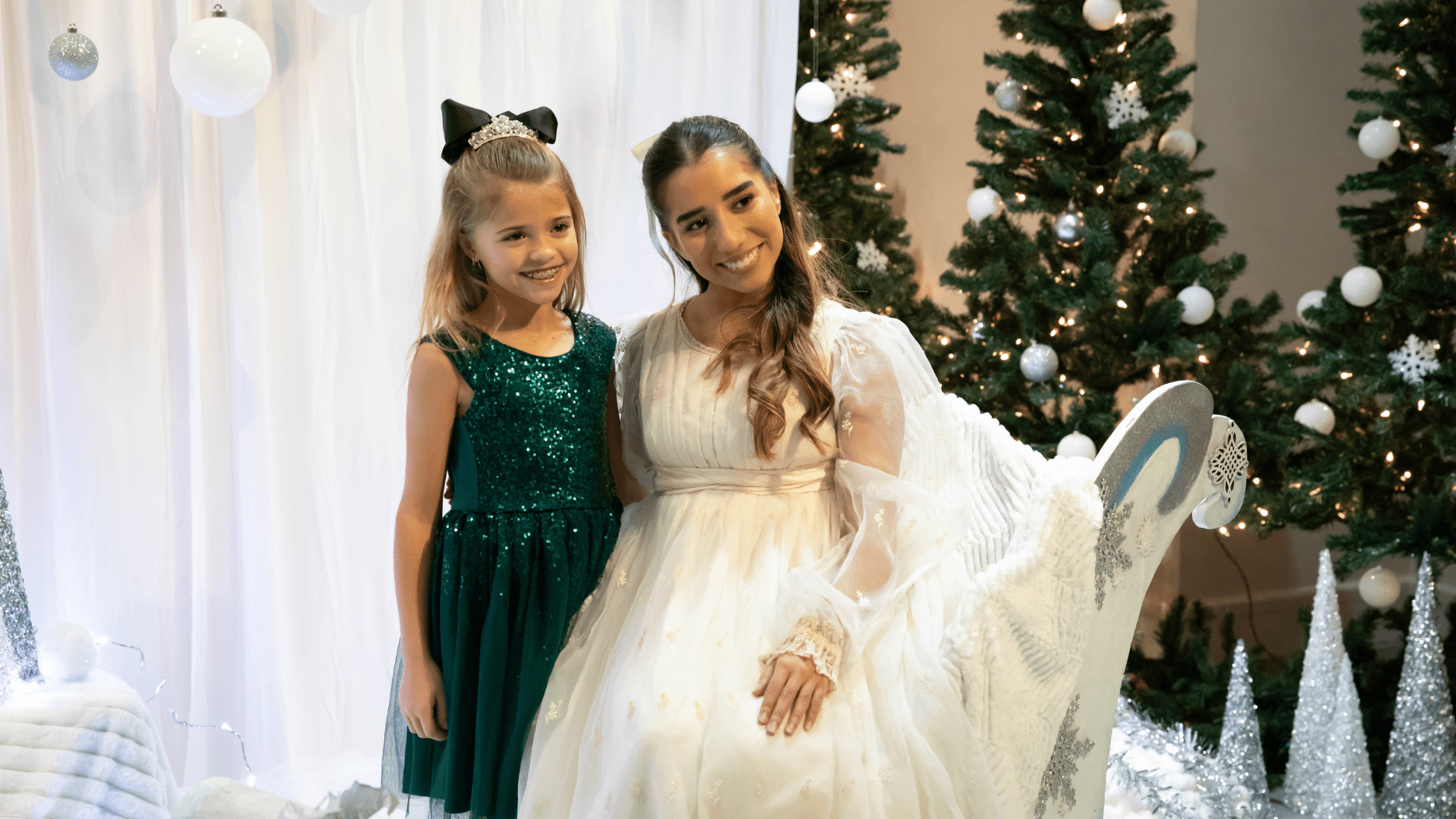
Selfie Stations
A variety of Nutcracker-themed selfie stations

…and MORE!
Experience the feelings of a winter wonderland, from ice skating on the Terrace to the sweeping views of Austin’s skyline.
- The Fun Begins Before the Show
-
THE FUN BEGINS BEFORE THE SHOW

Meet Us at the Welcome Center
Pre-show & Intermissions • Orchestra Level & Lower Lobby • FREEStart your night right! Swing by the Welcome Center for a warm hello, insider tips, and a handy map to all the pre-show happenings. Located on the Orchestra level (east side terrace) and inside the Rollins Lobby. Come early—we’ll point you to the fun!

Snap Pics at the Selfie Stations
Pre-show & Intermissions • Throughout the Long Center • FREELights, camera, curtain! Snap a pic at our themed selfie spots and tag @balletaustin for a chance to be featured. They’re scattered throughout the venue and out on the terrace—find them all and strike a pose!

Cocktails, Mocktails, & More!
Pre-show & Intermissions • Throughout the Long CenterSip, savor, and soak it all in! Treat yourself to handcrafted specialty cocktails inspired by the performance, paired with “small bites” that are perfect for sharing. Then take your drink out to the terrace, where the stunning downtown skyline sparkles before you and the crisp autumn breeze sets the perfect mood for an unforgettable experience.

Take a Peek Behind the Ballet!

Behind the Ballet! Sponsor
Pre-show & Intermissions • 2nd Floor Mezzanine (Kodosky Lounge & Gallery 701) • FREEStep into the magic before the curtain rises. This interactive pop-up space lets you explore pointe shoes, costumes, music, and more! It’s never the same twice, so even return visitors will find something new. Open 90 minutes before showtime and during intermission.

Learn More at Footlights

Footlights Sponsor
Pre-show • 2nd Floor Mezzanine (Dell Hall) • FREEWant the inside scoop before the curtain rises? Join our knowledgeable staff for an engaging look at the story, themes, and creative process behind the performance. Starts 1 hour before showtime at theater entrances 23 & 24. It’s just 25 minutes—and a great way to deepen the experience.

Shop The Gift Barre
Orchestra & Mezzanine Levels • Pre-show, Intermission & Post-showThe perfect gift? It’s waiting at the Guild Gift Barre. From collectible Nutcrackers to t-shirts and festive ornaments, it’s your one-stop shop for holiday cheer and special souvenirs. Plus, every purchase supports Ballet Austin’s scholarship programs—feel-good gifting at its finest!
- Production Credits
- Cast List
-
ACT I
FRAU SILBERHAUS
Dianetzy Rojas ……………………………………………………… Dec. 5, 7, 13 (7:30), 19, 21
Katherine Deuitch…………………………………..Dec. 6 (2:00), 12, 14, 20 (2:00), 22
Grace Morton ………………………………Dec. 6 (7:30), 13 (2:00), 18, 20 (7:30), 23
HERR SILBERHAUS
Leighton Taylor……………………………………………………. Dec. 5, 7, 13 (7:30), 19, 21
Morgan Stillman……………………………………..Dec. 6 (2:00), 12, 14, 20 (2:00), 22
Arnaldo Hernandez……………………..Dec. 6 (7:30), 13 (2:00), 18, 20 (7:30), 23
CLARA
Lisa Lule………………………………………..Dec. 6 (7:30), 13 (2:00), 18, 20 (7:30), 23
Allegra Johnson……………………………………..Dec. 6 (2:00), 12, 14, 20 (2:00), 22
Saki Takahashi ………………………………………………………..Dec. 5, 7, 13 (7:30), 19, 21
FRITZ
James Worden…………………………….Dec. 6 (7:30), 13 (2:00), 18, 20 (7:30), 23
Cole Heppner…………………………………………Dec. 6 (2:00), 12, 14, 20 (2:00), 22
Charlie Determan………………………………………………….Dec. 5, 7, 13 (7:30), 19, 21
DROSSELMEYER
Julius Taiber*
NEPHEW
Joshua Tyebkhan………………………………………Dec. 5, 7, 13 (7:30), 18, 19, 21, 23
Caleb Holt…………………………………………………….Dec. 6, 12, 13 (2:00), 14, 20, 22
GOVERNESS
Meg Kataoka ………………………Dec. 5, 6 (7:30), 7, 13, 18, 19, 20 (7:30), 21, 23
Alayna Lautner………………………………………..Dec. 6 (2:00), 12, 14, 20 (2:00), 22
GUESTS
Tuscany Bramwell, Maddie Brown, Katrina Chen, Alayna Hamade,
Grace Jaramillo, Amaya Joseph, Alyssa Manguiat, Nya Tinio-Mitchell,
Colin Canavan, Tristin Filsinger, Grayson Gallella, Colin Heino,
Kyawzwa Jeremy Lwin, Jack Morris
PARTY GIRLS
Phoebe Anderson, Lyla Barker, Valentina Bernal, Noelle Biven,
Natalie Chun, Julia Fagundes Lopes, Nydia (Sophie) Godreau,
Morrison (Emmy) Hewitt, Grace Jiang, Isabela Peña, Charlotte Prodel,
Isabella Rashidi, Georgia Siela, Katie Turner, Samrawit Waelbroeck,
Lily Wilcox, Kate Wright, Hannah Grace Wu
PARTY BOYS
Christopher Cox, Axton Gregory, Maxwell Snyder, Eli Tolin
DRESDEN DOLL
Alexandra Owens…………………………………………………..Dec. 5, 7, 13 (7:30), 19, 21
Meg Kataoka……………………………………………Dec. 6 (2:00), 12, 14, 20 (2:00), 22
Anika Crouser……………………………….Dec. 6 (7:30), 13 (2:00), 18, 20 (7:30), 23PIERROT DOLL
Grayson Gallella …………………………………………………….Dec. 5, 7, 13 (7:30), 19, 21
Samuel Mayer…………………………………………Dec. 6 (2:00), 12, 14, 20 (2:00), 22
Marco Lorenzo-Giguere……………..Dec. 6 (7:30), 13 (2:00), 18, 20 (7:30), 23
MICE
Kamryn Baker, Sofia Caballero Poveda, Jane Cave, Chloe Chapman,
Abigail DeLocke, Isabella Hernando, Olivia Lee, Arielle Monette,
Belle Ouyang, Penelope Ramos, Jameson Sanford, Abigail Zamora-FloresANGELS
Cora Bowers, Reade Bynum, Lola Carter, Clara Cockrill, Esther Denning,
Lucy Eddings, Celeste Gaulin, Allegra Emmanuelle Gonzalez Adame, Cora
Herrera, Violet Ibarra, Lara Irmak, Lovie Messer, Adalyn Mobley, Mila Moffet,
Giorgia Mussi, Ayaan Osman, Sophie Pellegrini, Yixin Peng, Charlotte
Pruzan, Victoria Pugh, Hannah Sagebiel, Mabel Scroggins,
June Seales, Zoe Sweazea, June Trotter, Olive Volk, Josephine Welter,
Emily Wetz, Genevieve ZubovskyNUTCRACKER PRINCE
Joshua Tyebkhan………………………………………Dec. 5, 7, 13 (7:30), 18, 19, 21, 23
Caleb Holt…………………………………………………….Dec. 6, 12, 13 (2:00), 14, 20, 22RAT KING
Nathan Bender………………………………………….Dec. 5, 7, 13 (7:30), 18, 19, 21, 23
Avery Wood………………………………………………….Dec. 6, 12, 13 (2:00), 14, 20, 22RATS
Kayla Acevedo, Nathan Bender, Kyla Guay, Caleb Holt, Rowen Moore,
Joshua Tyebkhan, Lucy Williams, Avery WoodTOY SOLDIERS
Joanna Brown, Hana Cornali, Phoebe Herbert, Miriam Hultgren,
Caroline Hunter, Abigail Lane, Emily Mosser Knight, Mia Naik, Sadie
Sarrat, Kiera Thompson, Hannah Vale, Allie WrightCAVALRY
Sophia Bergara, Dylan Skye Bosh, Klara Campbell, Emma Campos,
Felicia Gurrola, Marie Esther Johnson, Ava Mason, Kaia Grace Meade,
Vesper Moreno, Juliet Nichols, Stella Scroggins, Gemariah “Peach” SmithSNOW QUEEN
Alyssa Manguiat……………………………………………………..Dec. 5, 7, 13 (7:30), 19, 21
Anika Crouser………………………………………….Dec. 6 (2:00), 12, 14, 20 (2:00), 22
Lexi Eicher…………………………………….Dec. 6 (7:30), 13 (2:00), 18, 20 (7:30), 23SNOW KING
Jack Morris …………………………………………………………….Dec. 5, 7, 13 (7:30), 19, 21
Colin Canavan………………………………………..Dec. 6 (2:00), 12, 14, 20 (2:00), 22
Kyawzwa Jeremy Lwin………………..Dec. 6 (7:30), 13 (2:00), 18, 20 (7:30), 23SNOWFLAKES
Angelina Carbonaro, Tuscany Bramwell, Maddie Brown, Katrina Chen,
Zoey Amanda Chew, Alayna Hamade, Grace Jaramillo, Amaya Joseph,
Alayna Lautner, Gigi McDowell, Hina Oshima, Emily Saffos,
Ryan Smallwood, Nya Tinio-Mitchell, Olivia VegaACT II
SUGAR PLUM FAIRY
Katherine Deuitch………………………………………………….Dec. 5, 7, 13 (7:30), 19, 21
Grace Morton …………………………………………Dec. 6 (2:00), 12, 14, 20 (2:00), 22
Dianetzy Rojas ……………………………..Dec. 6 (7:30), 13 (2:00), 18, 20 (7:30), 23CAVALIER
Morgan Stillman…………………………………………………….Dec. 5, 7, 13 (7:30), 19, 21
Arnaldo Hernandez………………………………..Dec. 6 (2:00), 12, 14, 20 (2:00), 22
Leighton Taylor…………………………….Dec. 6 (7:30), 13 (2:00), 18, 20 (7:30), 23CHOCOLATE
Anika Crouser, Tristin Filsinger………………………………Dec. 5, 7, 13 (7:30), 19, 21
Lexi Eicher, Jack Morris………………………….Dec. 6 (2:00), 12, 14, 20 (2:00), 22
Alexandra Owens, Colin Canavan……….Dec. 6 (7:30), 13 (2:00), 18, 20 (7:30), 23
Nathan Bender, Grayson Gallella, Caleb Holt, Marco Lorenzo-Giguere,
Samuel Mayer, Joshua Tyebkhan, Avery WoodCOFFEE
Grace Morton, Colin Heino………………………………….Dec. 5, 7, 13 (7:30), 19, 21
Dianetzy Rojas, Kyawzwa Jeremy Lwin……. Dec. 6 (2:00), 12, 14, 20 (2:00), 22
Meg Kataoka, Morgan Stillman…..Dec. 6 (7:30), 13 (2:00), 18, 20 (7:30), 23TEA
Marco Lorenzo-Giguere……………………………………….Dec. 5, 7, 13 (7:30), 19, 21
Grayson Gallella ……………………………………..Dec. 6 (2:00), 12, 14, 20 (2:00), 22
Samuel Mayer………………………………Dec. 6 (7:30), 13 (2:00), 18, 20 (7:30), 23
Carla Ames-Corral, Ilex Chang, Ethan Fallon, Stella Johnson, Lucia
Kugler, Ellis Lowry, Mary Austin McKenna, Willow McQueen,
Brooke Montejano, Anastasia “Ana Beth” Myers, Mila Ostrovich,
Misha Patel, Cecelia Pellegrini, Scarlett Petty, Alexia Rashidi,
Sophia Sanders, Avalon Shattuck, Katelyn Shopp, Asa Sundstrom,
Piper Uccello, Solveig Weatherl, Lulu West, Karis Wu, Carmyn ZoghbyTREPAK
Kyawzwa Jeremy Lwin………………………………………….Dec. 5, 7, 13 (7:30), 19, 21
Samuel Mayer…………………………………………Dec. 6 (2:00), 12, 14, 20 (2:00), 22
Tristin Filsinger………………………………Dec. 6 (7:30), 13 (2:00), 18, 20 (7:30), 23
Nathan Bender, Caleb Holt, Joshua Tyebkhan, Avery WoodMARZIPAN
Meg Kataoka…………………………………………………………..Dec. 5, 7, 13 (7:30), 19, 21
Colin Heino …………………………………………….Dec. 6 (2:00), 12, 14, 20 (2:00), 22
Marco Lorenzo-Giguere……………..Dec. 6 (7:30), 13 (2:00), 18, 20 (7:30), 23
Kayla Acevedo, Kyla Guay, Gigi McDowell, Hina Oshima, Lucy WilliamsBON-BONS
Teresa Angulo, Mila Atamas, Arya Barnes, Aria Barton, Dahlia Bekanich,
Emma Breed, Cassidy Burke, Pierce Bynum, Caroline Campos,
Vivienne Castro, Grace Cohen, Elizabeth Fric, Wren Furrh,
Victoria Guerrero-Montes, Katriel Hwang, Ximena Jimenez,
Melian Johnson, Sose Jade Johnson, Valentina Litchfield,
Victoria Livescu, Caroline McShane, Caroline Moss, Phoebe Newhouse,
Teresa Peña, Hera Robichaux, Clara Santana, Amelia Seibert,
Natalia Soltero, Yahxyiel Stephens, Valentina Tapia, Talia Tatman,
Eva Belle Terrazas, Nora ThompsonWALTZ OF THE FLOWERS
Amaya Joseph……………………………………………………….Dec. 5, 7, 13 (7:30), 19, 21
Alexandra Owens……………………………………Dec. 6 (2:00), 12, 14, 20 (2:00), 22
Angelina Carbonaro…………………….Dec. 6 (7:30), 13 (2:00), 18, 20 (7:30), 23
Tuscany Bramwell, Maddie Brown, Katrina Chen, Zoey Amanda Chew,
Alayna Hamade, Grace Jaramillo, Alayna Lautner, Ryan Smallwood,
Emily Saffos, Nya Tinio-Mitchell, Olivia VegaMOTHER GINGER CAST
SHARON VIGIL
CEO, Communities In
Schools of Central Texas
Thursday, Dec. 4, 7:30 pm
(Night of Community)MIKE WHITE
Head Softball Coach, UT Austin
Friday, Dec. 5, 7:30 pmVANESSA FUENTES
Mayor Pro Tem, City of Austin
Saturday, Dec. 6, 2:00 pmDEBRA WELLS
Photographer
Saturday, Dec. 6, 7:30 pmDELIA GARZA
County Attorney, Travis County
Sunday, Dec. 7, 2:00 pmFOZZY WHITAKER
ESPN Analyst and Former NFL &
Texas Longhorn Football Player
Friday, Dec. 12, 7:30 pmMARC MULLINS
Anchor, KVUE News
Saturday, Dec. 13, 2:00 pmAARON FRANKLIN
Co-owner, Franklin BBQ
Saturday, Dec. 13, 7:30 pmCHET GARNER
Creator & Host, The Day Tripper
Sunday, Dec. 14, 2:00 pmVIC SCHAEFER
Head Women’s Basketball
Coach, UT Austin
Thursday, Dec. 18, 7:30 pmLAUREN PETROWSKI
Television Host and
Content Creator
Friday, Dec. 19, 2:00 pmANGELA MEANS
Director, Austin Arts, Culture,
Music & Entertainment,
City of Austin
Saturday, Dec. 20, 2:00 pmWILL BRIDGES
Co-owner, Antone’s Nightclub
Saturday, Dec. 20, 7:30 pmFORREST PREECE
Ballet Austin Board Member &
Consulting Dilettante
Sunday, Dec. 21, 2:00 pmJEREMY MARTIN
President & CEO,
Austin Chamber of Commerce
Monday, Dec. 22, 2:00 pmJ.B. SAUCEDA
Executive Producer and Host,
Texas Country Reporter
Tuesday, Dec. 23, 2:00 pm - Opening Weekend
-
Opening Weekend ONLY Enjoy…
December 5-7
Kick off the season with extra-magical moments available only during Opening Weekend. Come early and step into a swirl of holiday joy—sparkle, excitement, and memory-making all around you before the curtain even rises.
Complimentary Holiday PhotosCapture the spirit of the season with FREE professional holiday photos—the perfect keepsake to mark your Nutcracker tradition. Come early, strike a pose, and consider your holiday card officially checked off the list.
 Character Cameos in the Lobbies
Character Cameos in the LobbiesKeep an eye out for surprise appearances from beloved characters as they make their way through the theater. From mischievous mice to soldiers, bonbons, and more, little ones will light up seeing the magic come to life before the performance even begins.
Look for Tea, Mouse, Soldier, and Bon-Bon as they journey through the pre-show festivities. It’s a whimsical procession you won’t want to miss! Meet & Greet With Clara
Meet & Greet With ClaraSay hello to Clara! Strike a pose and capture a magical moment with Clara as she greets guests throughout the run—ready to make every child’s eyes sparkle.
 Selfie Stations
Selfie StationsA variety of Nutcracker-themed selfie stations

…and MORE!
Experience the feelings of a winter wonderland, from ice skating on the Terrace to the sweeping views of Austin’s skyline.
Still to Come in 2025/26
Learn more about the upcoming shows below.
BECOME A SEASON TICKET HOLDER
5 SHOWS
20% discount
4 SHOWS
20% discount
3 SHOWS
15% discount
2 SHOWS
10% discount
*Additional ticket discounts are based on your package: 10% for 2-show packages, 15% for 3-show, and 20% for 4- or 5-show packages.

